Imagine locking eyes with an elephant in Namibia’s vast desert, witnessing a rare pangolin at dusk in South Africa, or having a lion stroll through your campsite in Botswana.
Exploring the wilds of South Africa, Botswana, and Namibia has gifted us with unforgettable wildlife encounters. From the vast landscapes of Nxai Pan National Park in Botswana to the intimate settings of Klaserie Nature Reserve, we’ve been lucky enough to witness many of Africa’s iconic wildlife.
In this post, we share the moments that left us breathless and in awe of this world’s untamed beauty. Join us as we recount our best wildlife experiences in Africa.
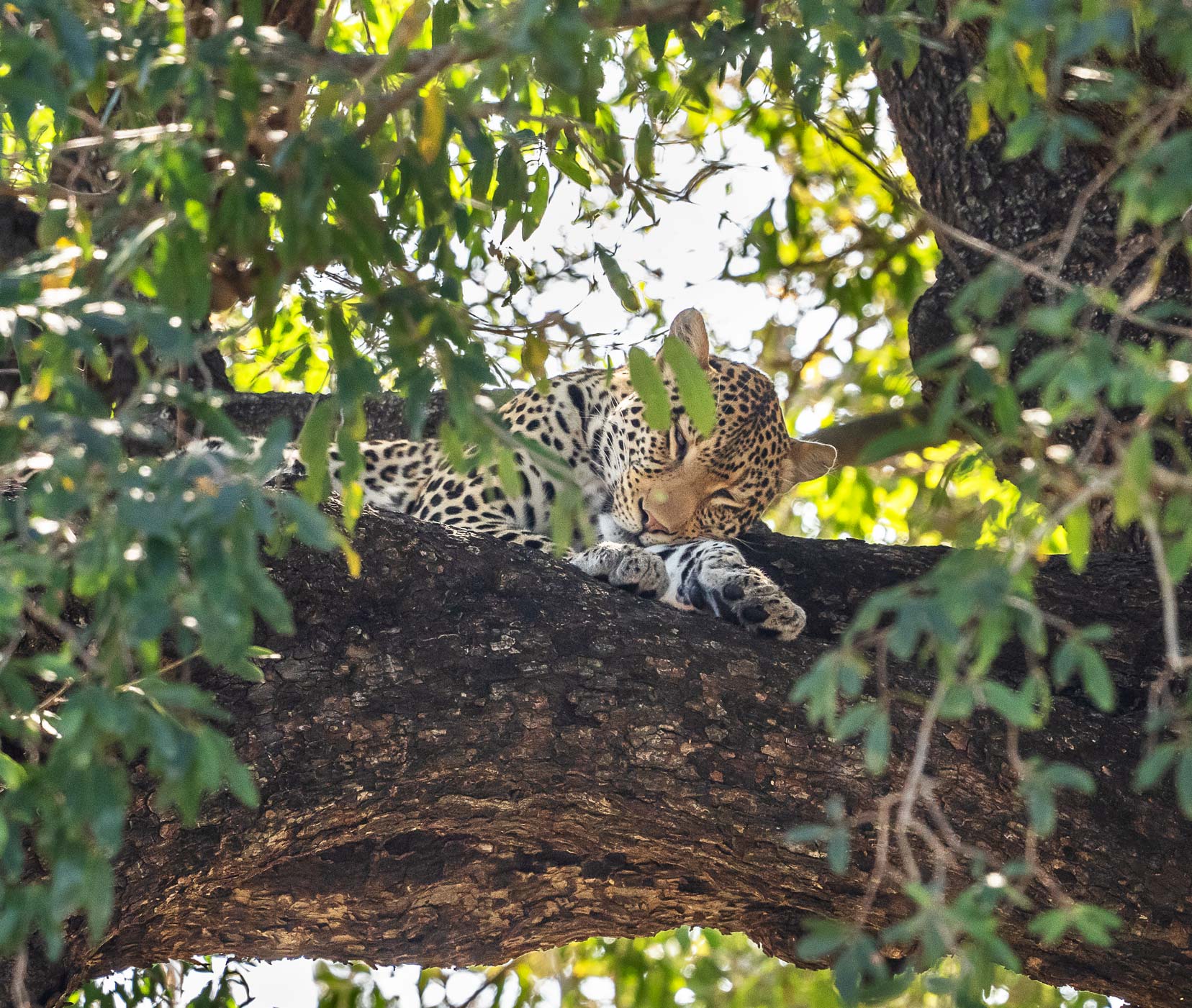
Quick Overview of Our Top Wildlife Experiences in Africa
For those short on time, here’s a brief look at the unforgettable wildlife encounters we’ll be sharing in detail.
Click on the links to jump directly to each experience and immerse yourself in the incredible moments we’ve had across Africa.
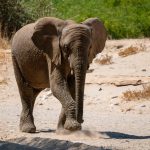
1. Desert Elephants in Namibia: A Majestic Experience
Witness the majesty of desert elephants thriving in Namibia’s harsh landscapes.

2. Lion Pride Feeding in South Africa: A Complex Emotion
Witnessing a lion pride feeding on a buffalo’s carcass brought a mix of awe and sorrow, highlighting the harsh realities of nature.
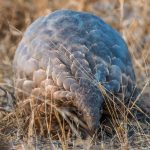
3. Pangolin in Greater Kruger, South Africa: A Rare and Magical Sight
Discover the rare and magical sight of a pangolin in the Greater Kruger area of South Africa.
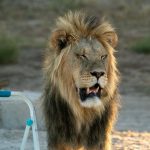
4. Lions in Kgalagadi, Botswana: A Thrilling Encounter
Experience the adrenaline rush of lions roaming freely in Kgalagadi Transfrontier Park … and the moment one came into camp.
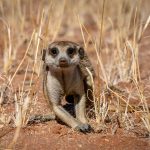
5. Meerkats in Namibia: A Delightful Encounter
Enjoy the playful antics of meerkats at Kanaan Desert Retreat in Namibia.
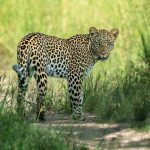
6. Leopard in Klaserie, South Africa: A Heart-Stopping Encounter
Feel the thrill of a close encounter with a leopard in Klaserie Private Nature Reserve.
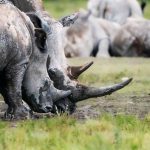
7. Rhinos in Botswana: An Unforgettable Experience
Get up close with rhinos at Khama Rhino Sanctuary in Botswana.

8. Carmine Bee-Eaters in Savuti, Botswana: A Spectacular Display
Marvel at the vibrant display of carmine bee-eaters in Savuti, Chobe National Park, Botswana.
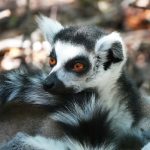
9. Monkeys in Monkeyland, South Africa: A Vibrant Encounter
Explore the lively world of primates at Monkeyland in South Africa.
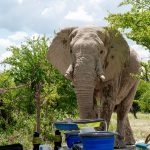
10. Elephants in Nxai Pan, Botswana: A Close Encounter
Experience the awe of elephants up close in Nxai Pan National Park, Botswana … more visitors in camp!
1. Elephants in Namibia: A Majestic Experience
We spent ten days navigating the Ugab, Huab, Hoanib, and Hoarisib riverbeds in Namibia, each with its own challenges and rewards.
Our adventure started at Brandberg White Lady Lodge, nestled at the eastern section of the Huab River, a known region for Desert Elephants in Namibia.
Driving Namibia’s dry riverbeds felt like entering another world. The vast stretches of sand and sparse vegetation created a harsh yet stunning landscape. Departing from Brandberg White Lady Lodge, the heat quickly rose, setting the stage for an adventure.
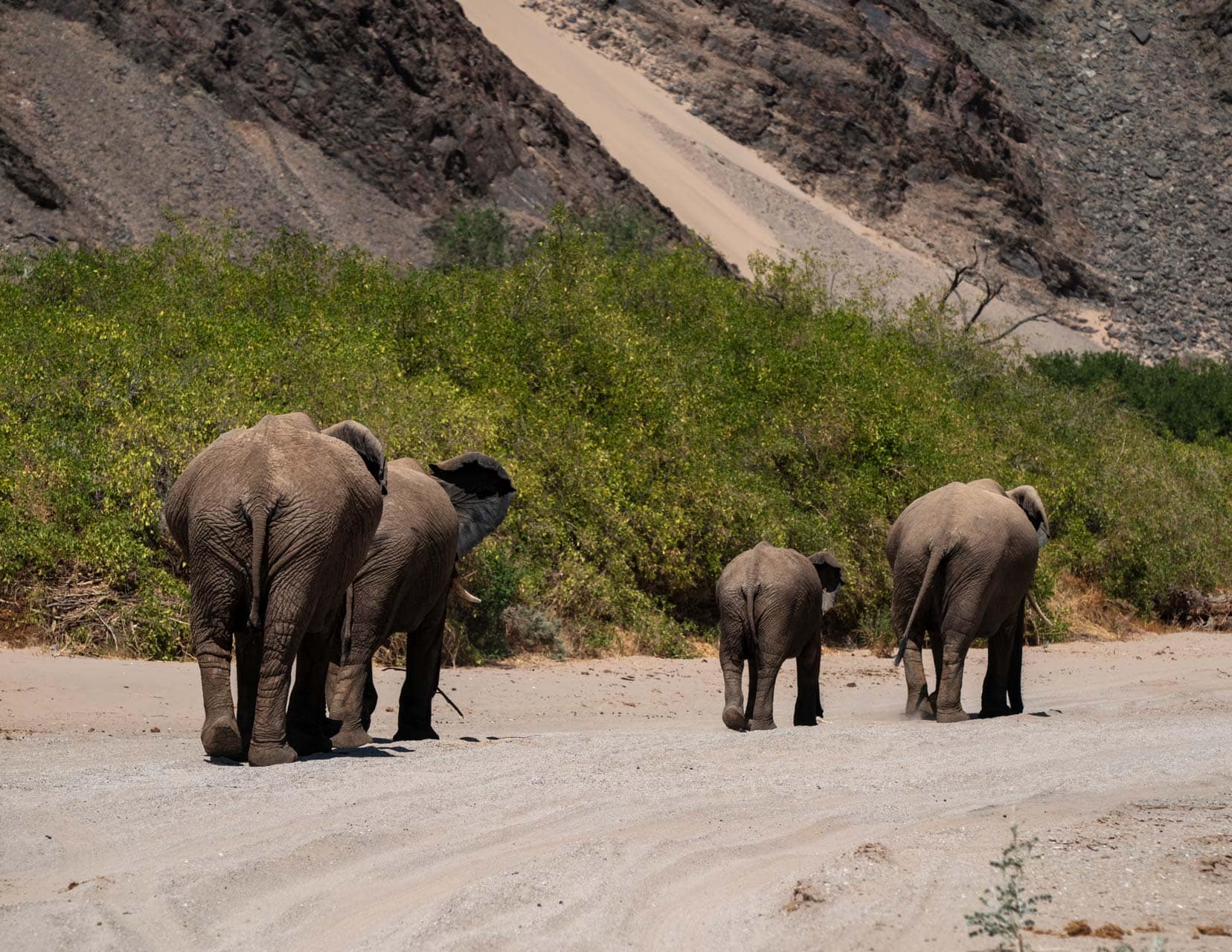
While we’ve encountered many elephants during our travels, seeing these majestic creatures thrive in the harsh desert was a new thrill. Would we be fortunate enough to spot the elusive desert elephants?
We were lucky. It wasn’t long before we came across a lone male elephant feeding off the lush riverbank vegetation. His massive frame moving with the surprising grace we have grown to recognise. Each elephant sighting is humbling, their sentience almost tangible.
A few kilometres further, we were parked and having a cuppa in the car when a group of four came out of the bushes and walked right past our vehicle. One came so close that we gazed right into its big brown eye, feeling an undeniable, if fleeting, connection.
“They say elephant’s eyes speak the greatest language in the world. Who else could make you feel so much without a word?”
—Legend of Tarzan
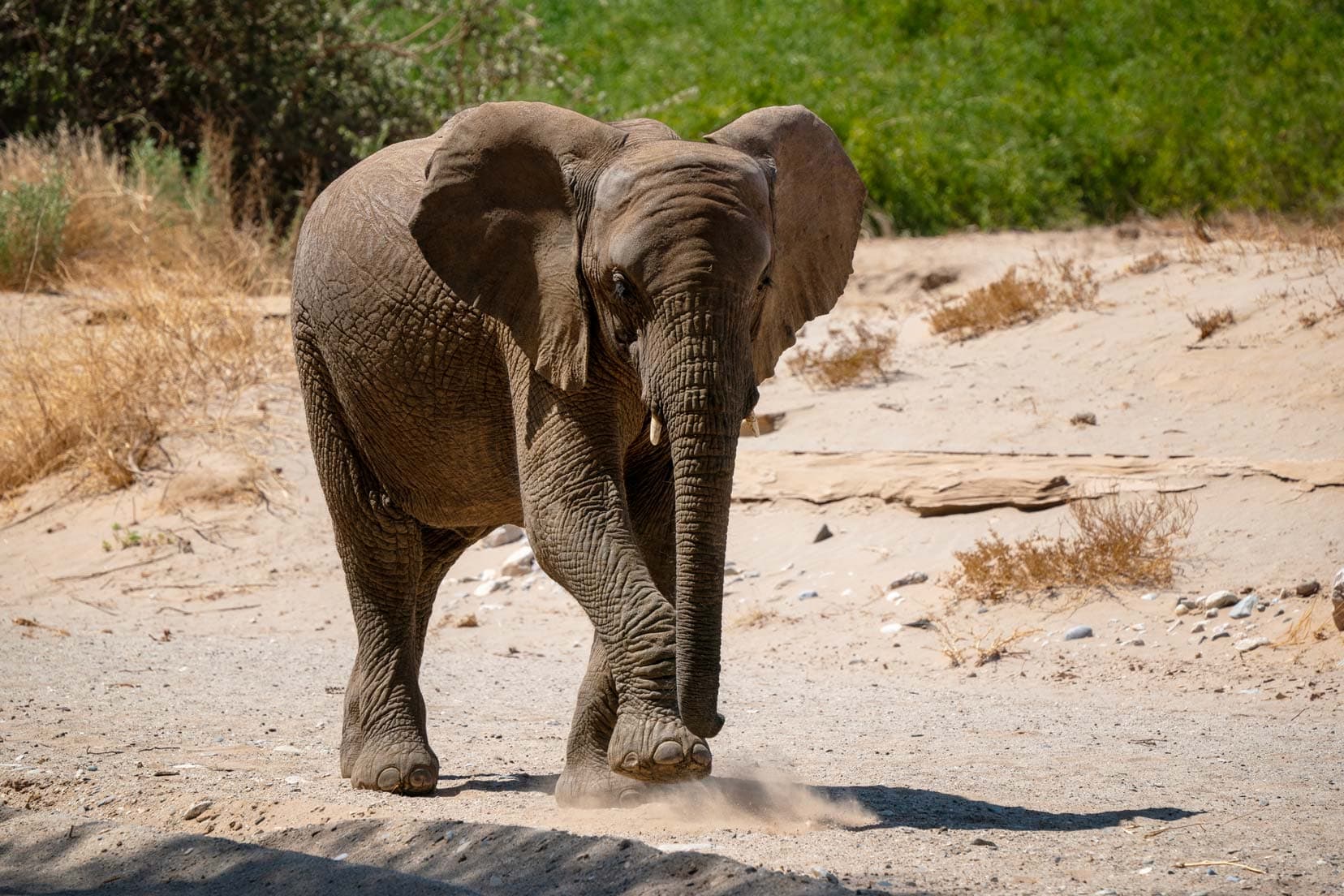
Navigating the riverbeds presented challenges. At one point, we were bogged and had to dig ourselves out—never ideal with wildlife nearby. Thick river reeds often created natural barriers, forcing us to backtrack in swampy sections. Each obstacle added to the adventure and highlighted the desert’s harsh beauty.
In the dry riverbeds here, was the first time we saw an adult elephant lying down, and for a while, we were worried there was something wrong with it.
Luckily, we stayed around long enough to see it get up and wander off. We later came across more elephants lying down, so realised it was perhaps more common for the desert elephants to do this.
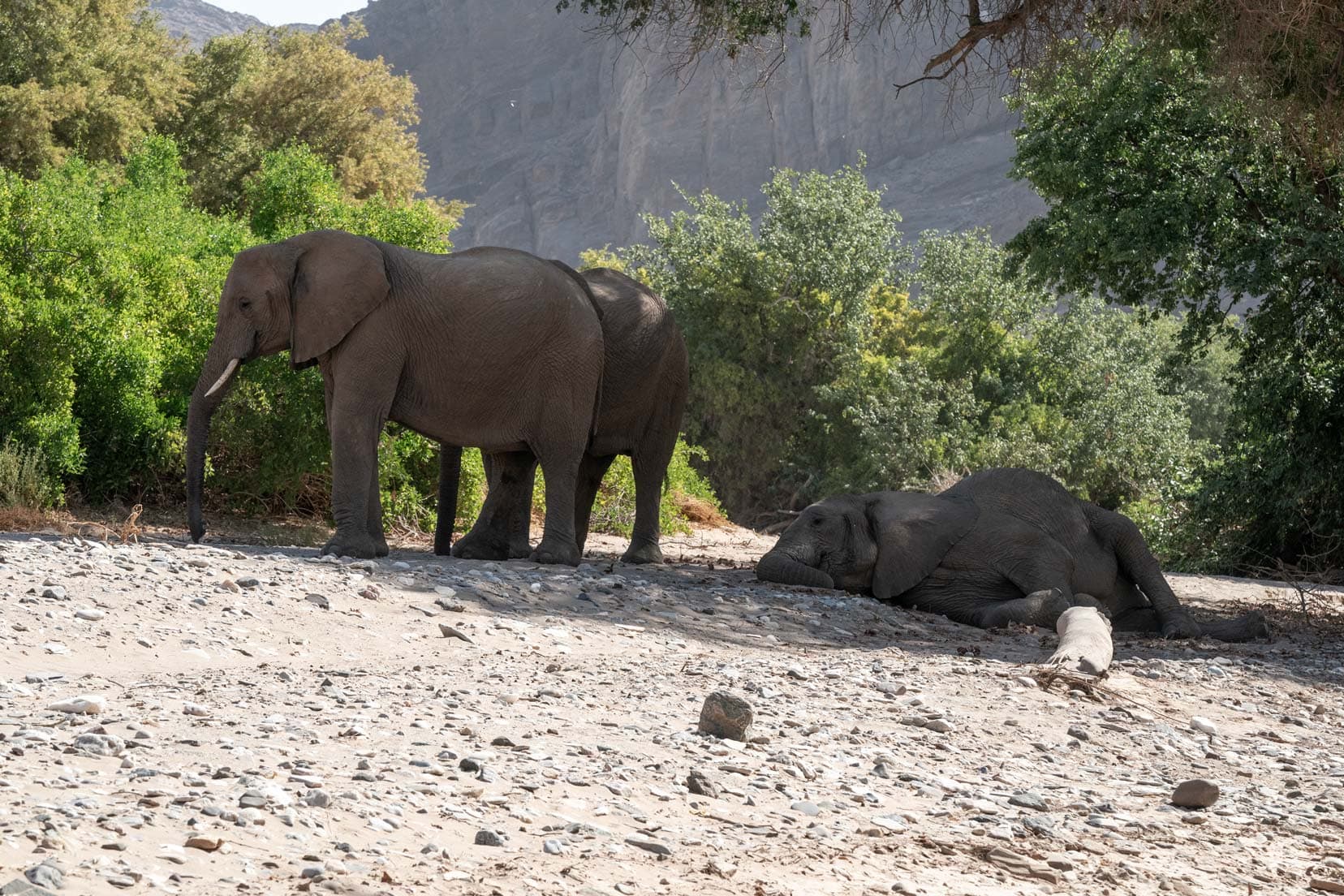
A Close Encounter
One of our most thrilling moments was when a mother elephant gradually walked towards our car with her calf. We had parked about 70 meters away, and she was relaxed as she approached us.
She actually fed the calf right beside us, showing that she was completely unthreatened. The quiet of the desert, interrupted only by the soft rustling of the reeds and the distant calls of other wildlife, made the moment even more special.
The beauty of Namibia’s desert elephants is a sight we’ll never forget. Witnessing their majesty thriving in Namibia’s harsh landscapes was humbling. Their resilience in such an unforgiving environment left us in awe.
Desert Elephant Taster Video
Here’s a short video of our Desert Elephant Experience:
2. Lion Pride Feeding in South Africa: A Complex Emotion
One afternoon, we were finishing up a rather uneventful self-drive safari — nature can be fickle that way — when we came across about 15 lions all feasting on a huge buffalo.
It was one of Klaserie’s two super prides, and we were treated to a first-row seat to one of nature’s gruesome but necessary spectacles.
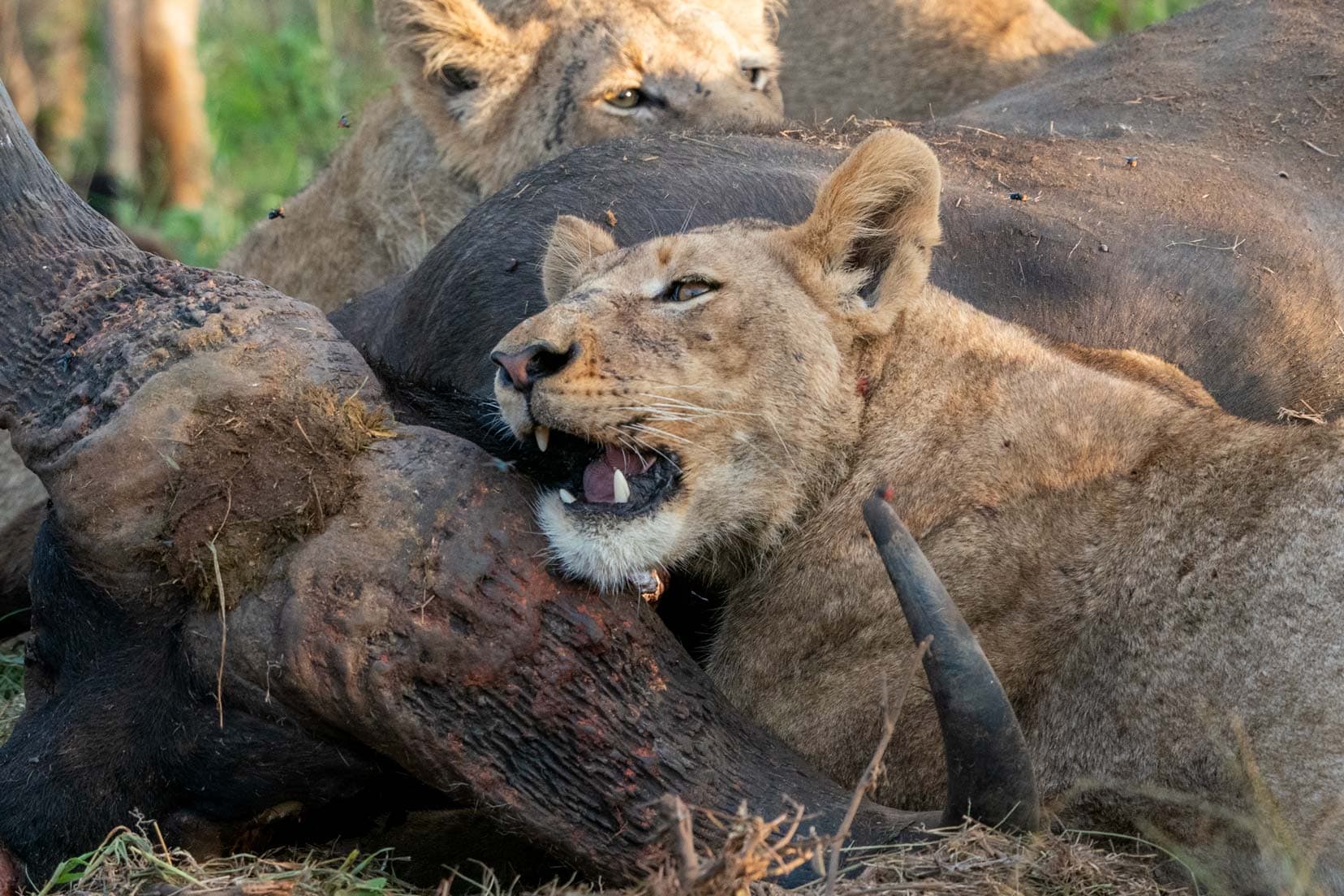
We first saw one lion with its face covered in blood — thrilled to see it and for a moment thought it was hurt but as we drove a little closer, I looked to the left and saw a row of about 10 lion faces staring at me — only about 15 meters away.
We spent the next two hours sitting in our vehicle, watching them feed. One of the young lions poked its head through the abdomen and surprisingly looked cute. Watching the juveniles play while feeding was a stark reminder of the circle of life.
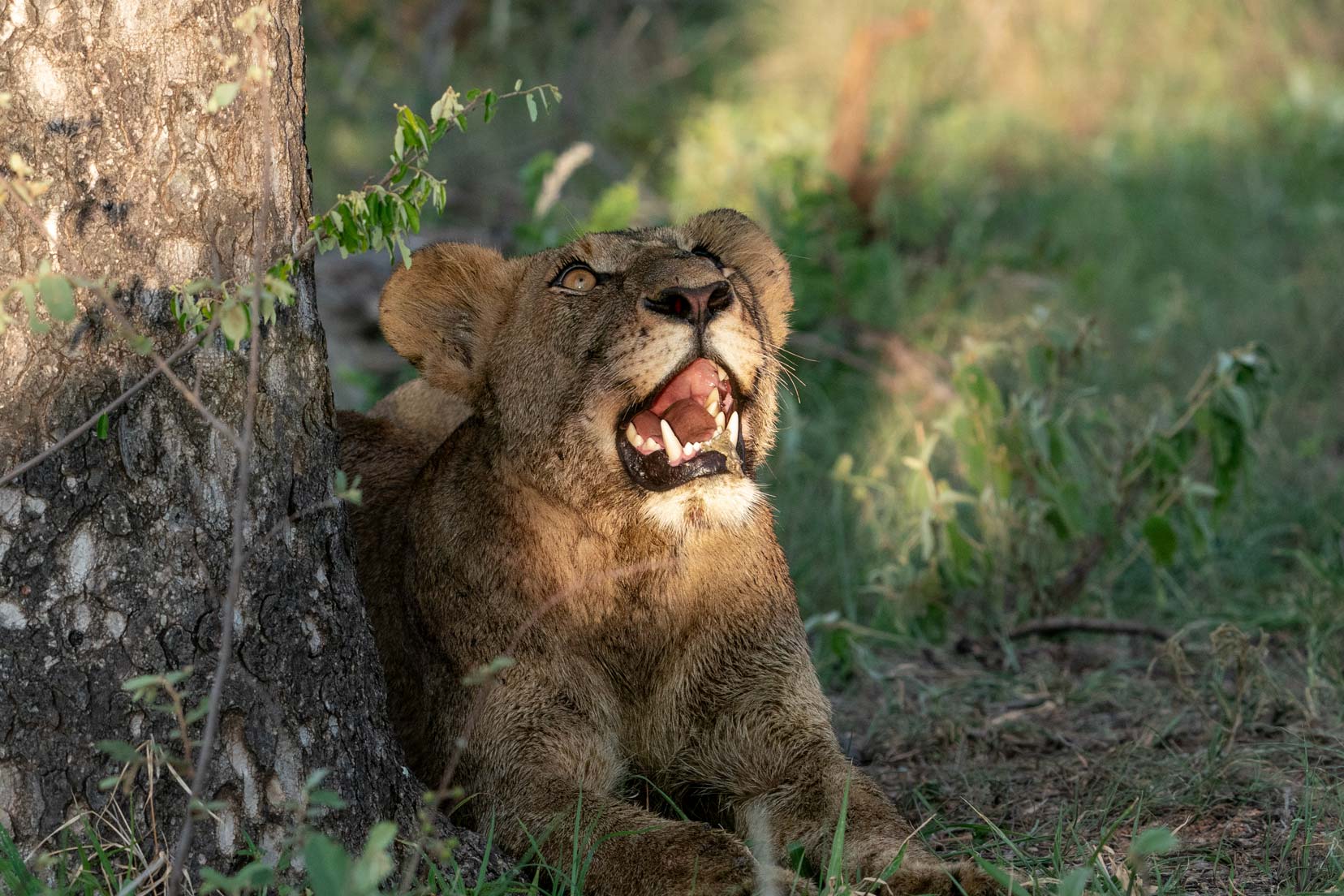
I still dread the day I see a baby animal preyed upon, though we haven’t witnessed it yet. It’s nature’s way—one life sustains another, a hard truth to face.
Life in Klaserie was a lesson in adaptation. And that’s the beauty of the African bush—it challenges you, changes you, and leaves you wanting more.
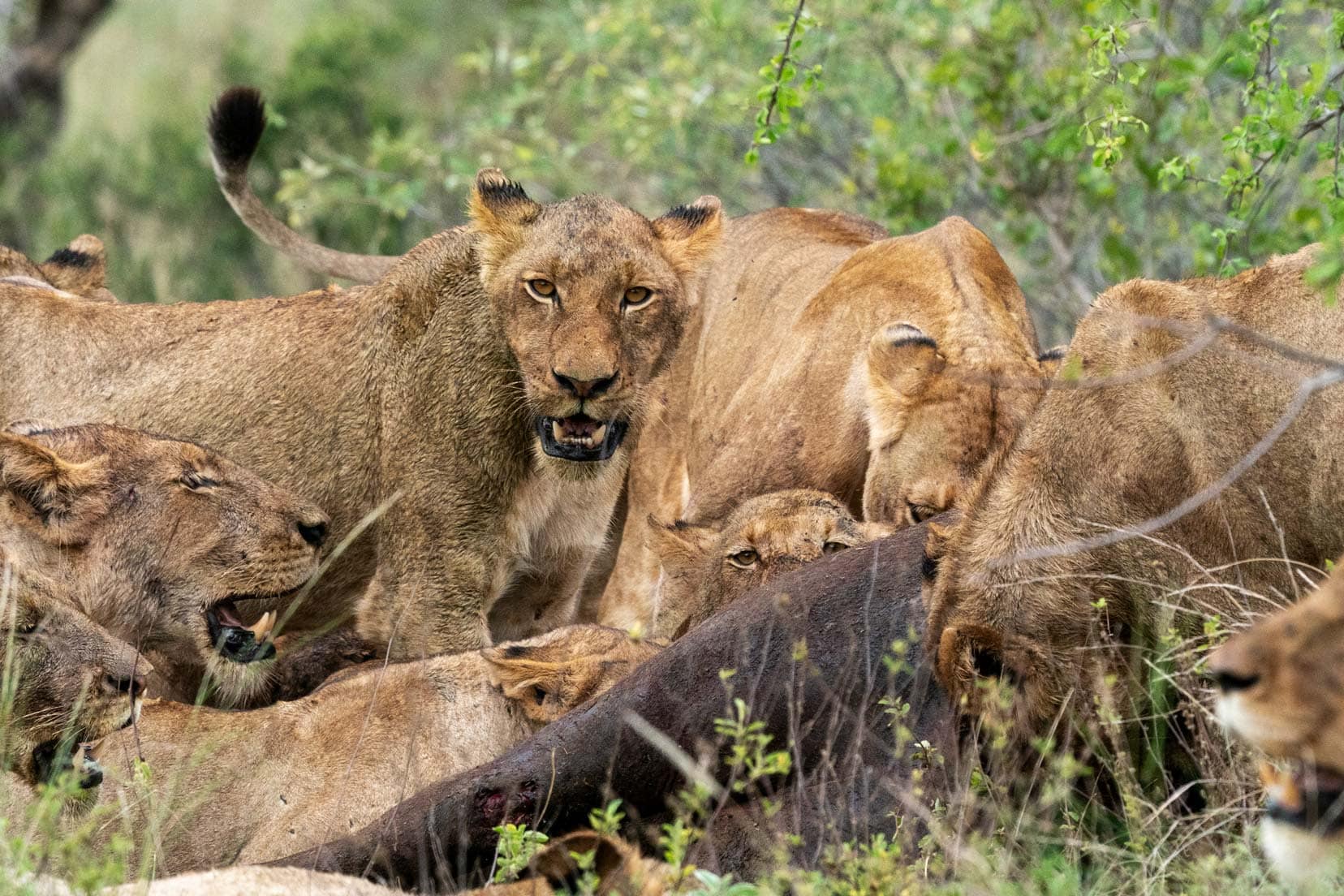
3. Pangolin in Klaserie: A Rare and Magical Sight
One early evening in Klaserie Nature Reserve, a mysterious rustling in the bushes caught our attention. Slowly, a pangolin emerged, its body covered in protective scales. It moved cautiously, and when our eyes met its tiny ones on an elongated snout, we were spellbound.
Lars, having read about pangolins, quickly identified it. We quietly observed, capturing the moment in our hearts and on camera.
As the light faded and the distant roars of lions echoed across the South African bush, we felt incredibly fortunate to witness such a rare sight.
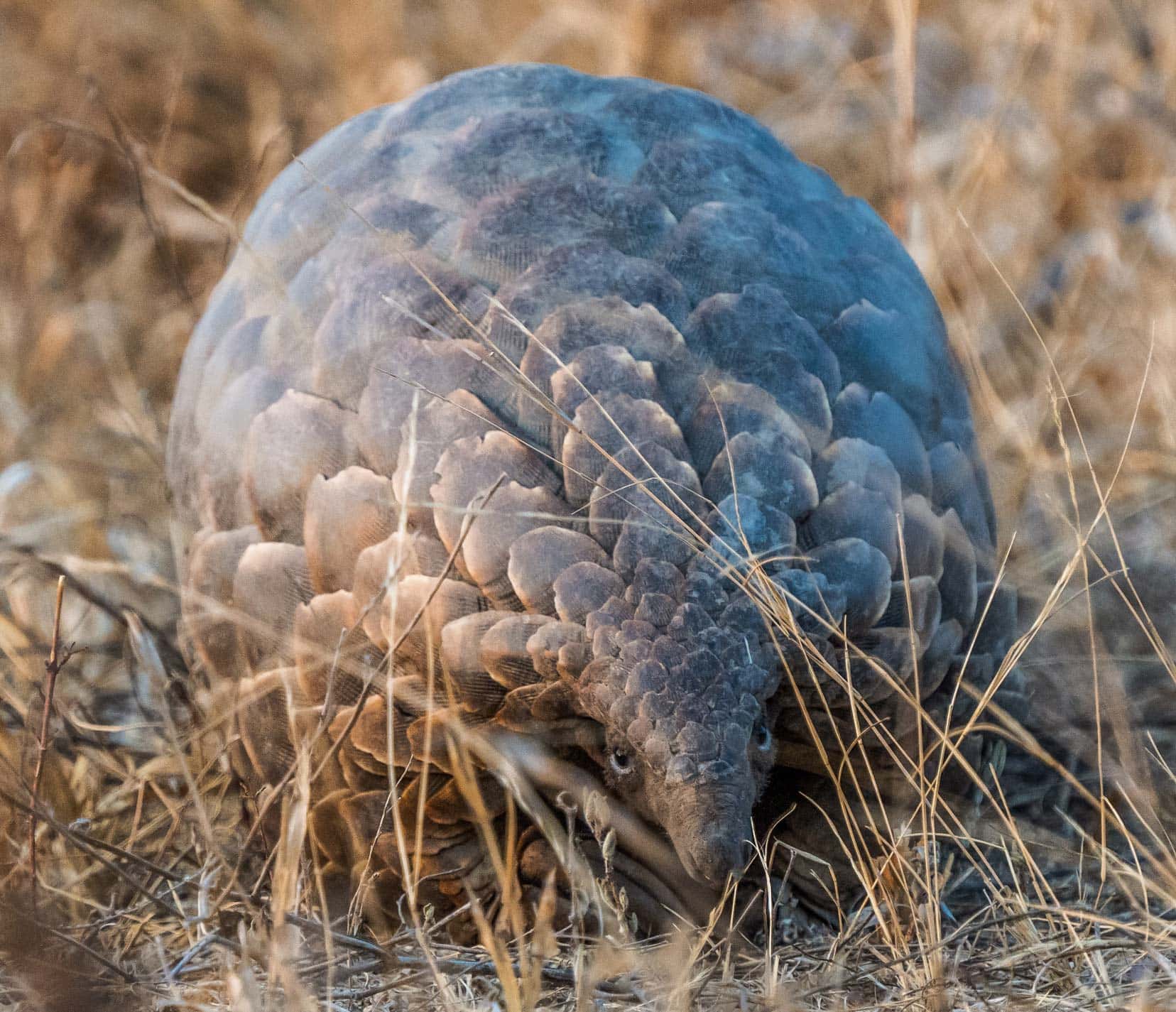
A few months later, while driving through Kruger National Park, we spotted another pangolin crossing the road in broad daylight. This sighting was even more astonishing, given that pangolins are typically nocturnal.
The pangolin, sensing our presence, curled into a defensive ball. Seeing such a rare creature twice in such a short period was beyond our wildest dreams.
It was a rare and magical moment that we felt incredibly privileged to witness. Read more about our incredibly lucky pangolin sightings.
Note: Seeing a pangolin on safari is extremely rare. Many lifelong residents of the African bush have never seen one. While it’s essential to cherish such hopes, it’s equally important to manage expectations and appreciate Africa’s abundant wildlife.
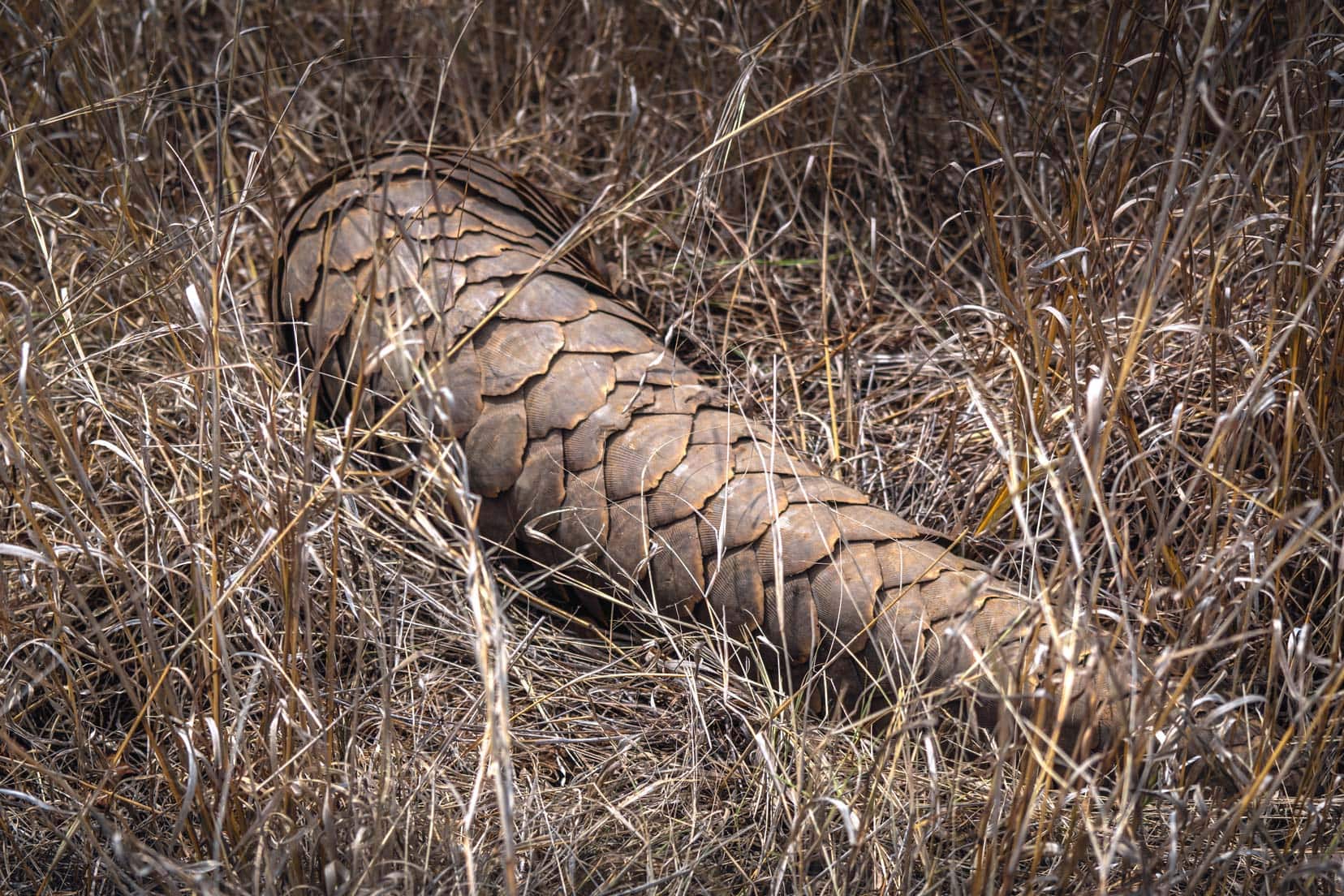
4. Lion in Kgalagadi: A Thrilling Encounter
Our first day of camping in the Kgalagadi Transfrontier Park was lacklustre, to say the least. The vast, arid landscape seemed empty, and our initial excitement waned as we saw little wildlife. But nature, in its unpredictability, had spine-tingling surprises in store for us.
The Kgalagadi, known for its harsh, desolate beauty, would soon become one of our favourite experiences in Botswana and South Africa. Little did we know, we would have extraordinary encounters right at our campsite.
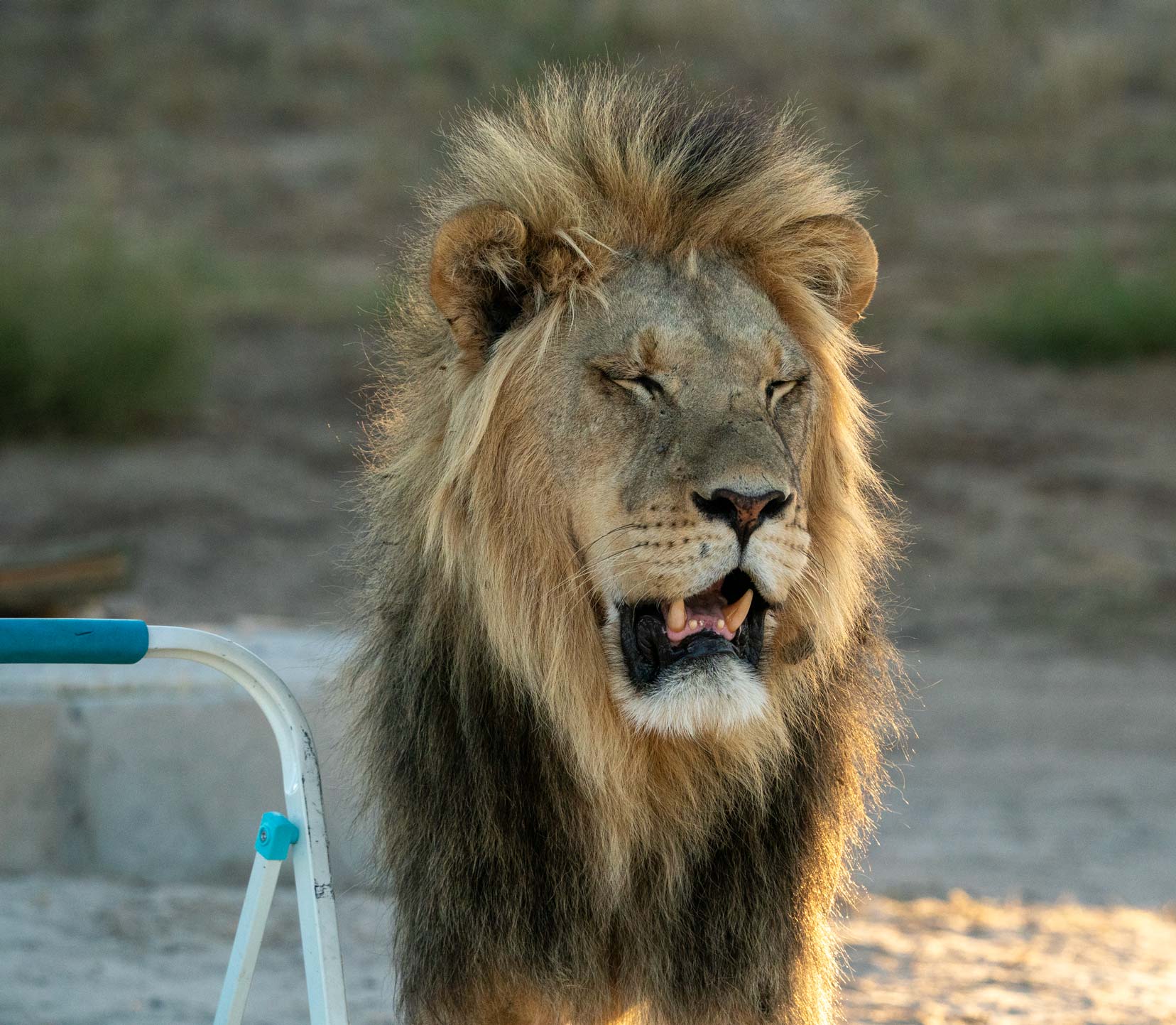
Early one morning, we heard a lion roaring across the pan. Lars, ever the diligent tracker, spotted it through the binoculars heading for the waterhole. We quickly packed up and made our way there.
In the early morning light, a black-maned lion stood lapping at the water. His mane glistened in the dawn light, making for stunning photographs. After quenching his thirst, he wandered along the track right back to our camp.
To our amazement, we followed him back to our campsite, where he sniffed around the shower and eventually moved on. The adrenaline rush was unlike anything we’d ever experienced.
A few days later, at Mabua Camp, we woke to another lion’s roar. It was a different lion but the same thrilling experience. We set off to meet him as he crossed the pan towards our camp.
Later that day, in the early evening, while stripping down for a quick wash, we were startled by a lion’s roar. We hurriedly dressed and retreated to the camper, laughing nervously at the unexpected thrill of a lion being so nearby…
Moments later, the lion strolled into our camp.

He sniffed around, found our step ladder particularly interesting, and even stepped into our shelter. After a quick inspection, he let out another thunderous roar and flopped down for a nap a few meters from us.
These encounters were surreal and humbling. Having a lion in camp twice was unbelievable. We still wonder what we would have done if it hadn’t roared—would we have stayed perfectly still or made noise to scare it away? Thankfully it wasn’t a decision we needed to take!
The beauty and unpredictability of the Kgalagadi reinforced our love for the wild and our respect for its inhabitants. These experiences reminded us of the importance of staying alert, respecting wildlife and cherishing the rare, magical moments that nature offers.
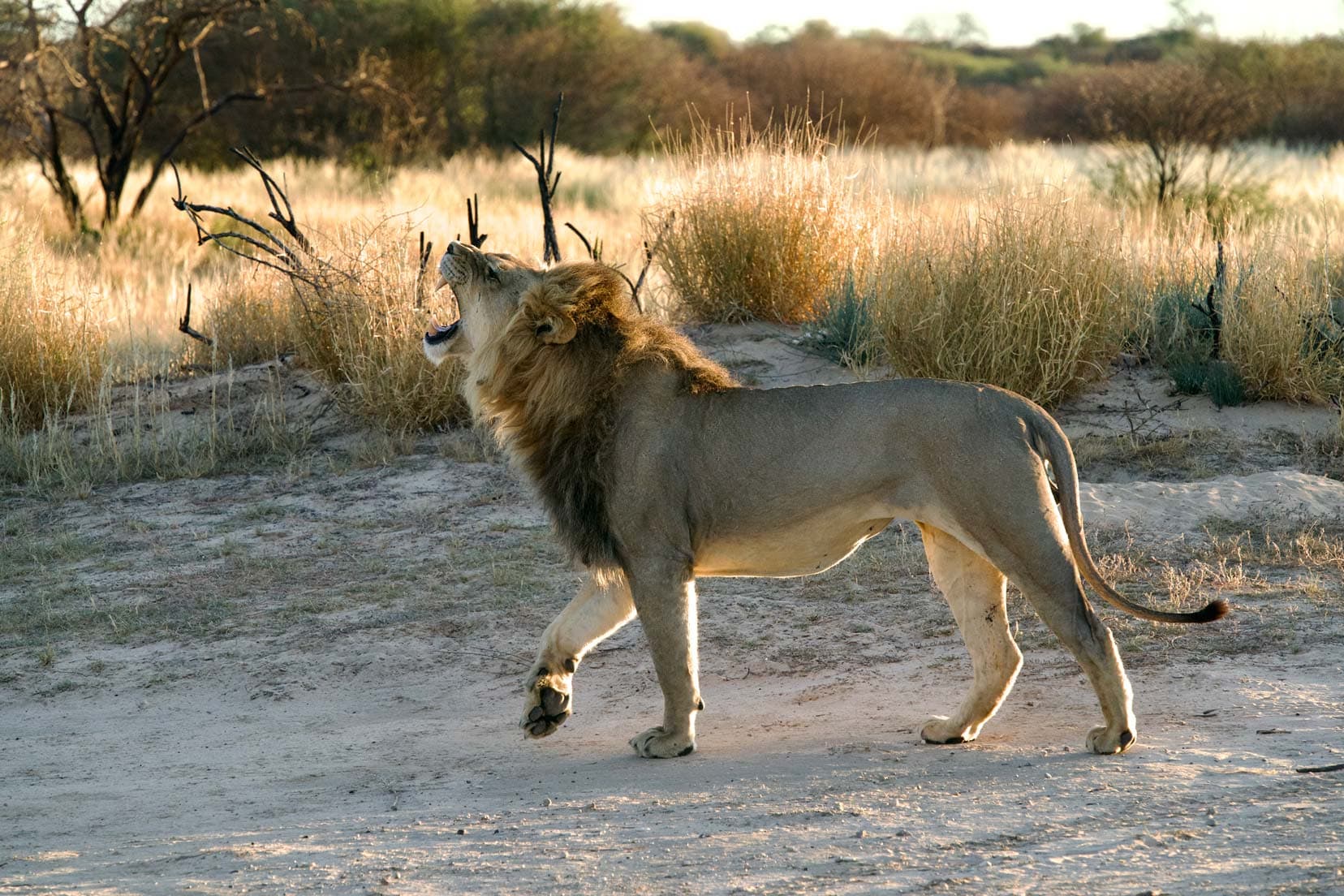
5. Meerkats at Kanaan Desert Retreat: A Delightful Encounter
Kanaan Desert Retreat, along Namibia’s scenic D707 route, is a haven for nature lovers and photographers.
With panoramic views of desert plains and the Tiras Mountains, this retreat offers a serene escape. Our visit included the unique opportunity to observe a local meerkat colony.
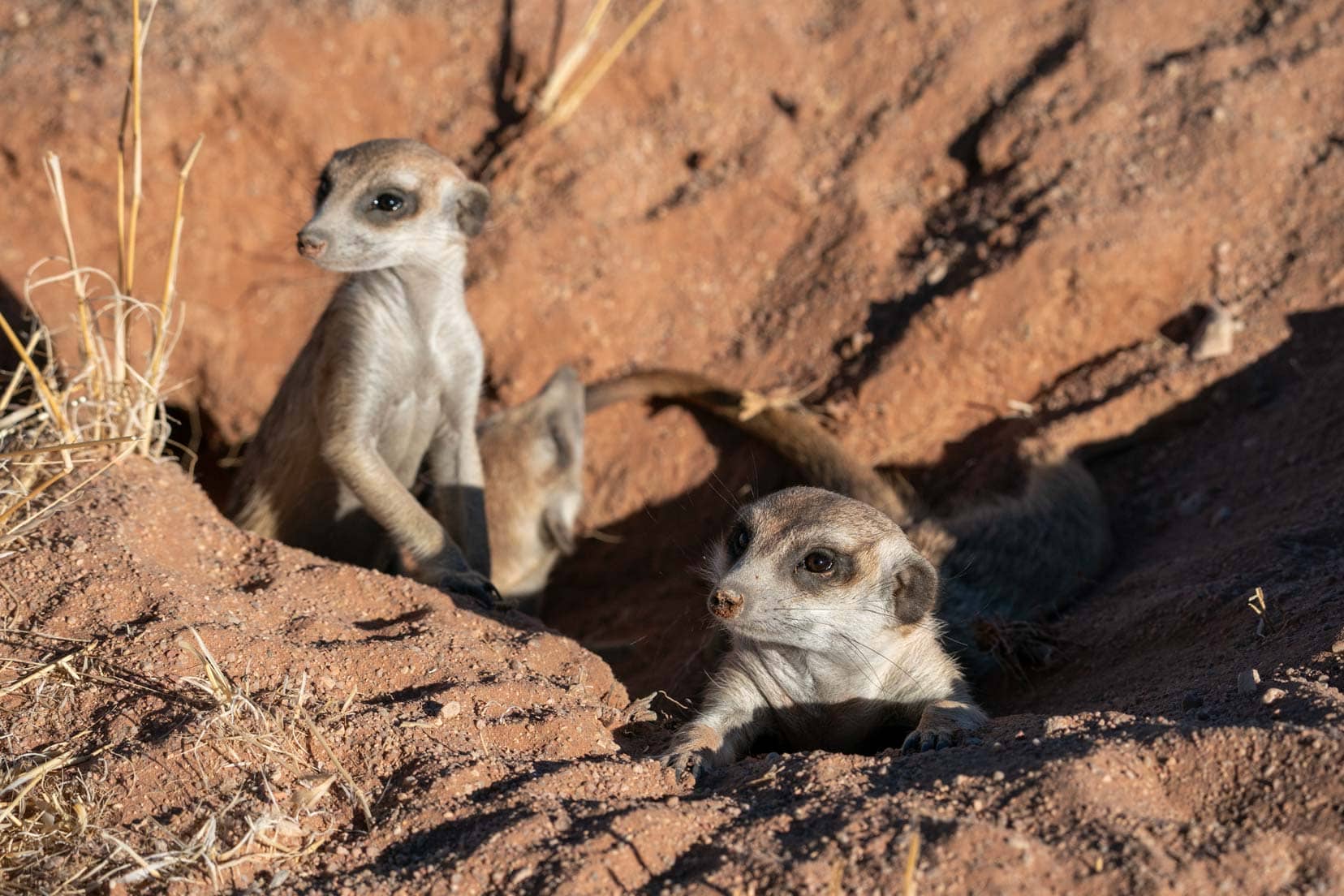
One morning, while walking between the campsites and the reception area, we encountered the resident meerkat colony. Initially, we kept our distance, respecting their space and allowing them to continue their foraging undisturbed.
To our surprise, as the meerkats dug for beetles and other insects, they gradually moved closer to us. They seemed unfazed by our presence, even pausing in the shade of our legs to rest.
Watching these social and curious creatures up close was such a heartwarming experience. Their antics and interactions provided endless entertainment, and we were able to capture some memorable photographs and videos.
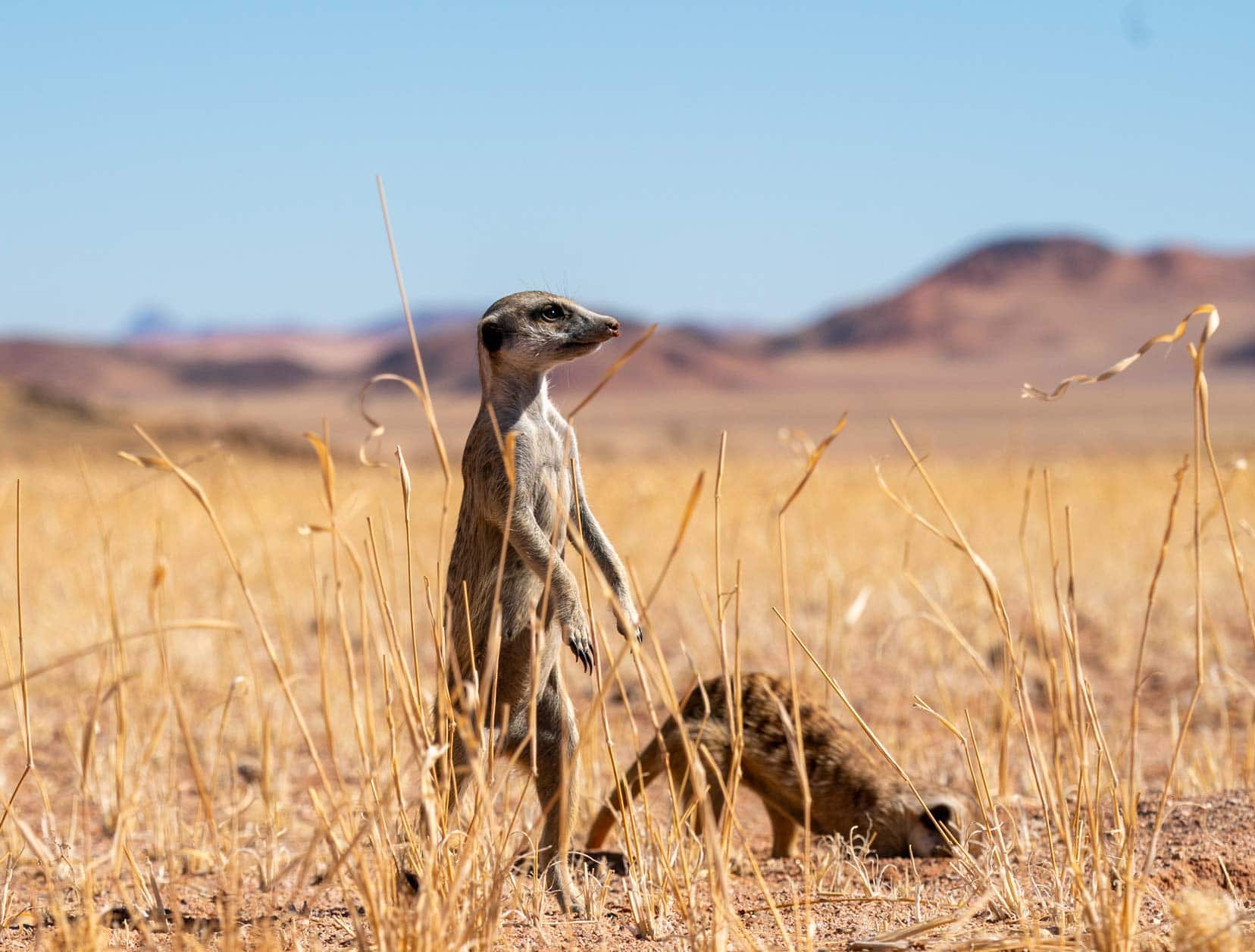
This encounter with the meerkats at Kanaan Desert Retreat reminded me of the simple joys that wildlife experiences bring. Observing these creatures in their natural environment added a special touch to our Namibian adventure.
The meerkats’ relaxed attitude towards us highlighted the trust that can develop when humans interact responsibly with wildlife. This experience reinforced our commitment to sustainable travel and conservation, ensuring that future generations can enjoy similar encounters.
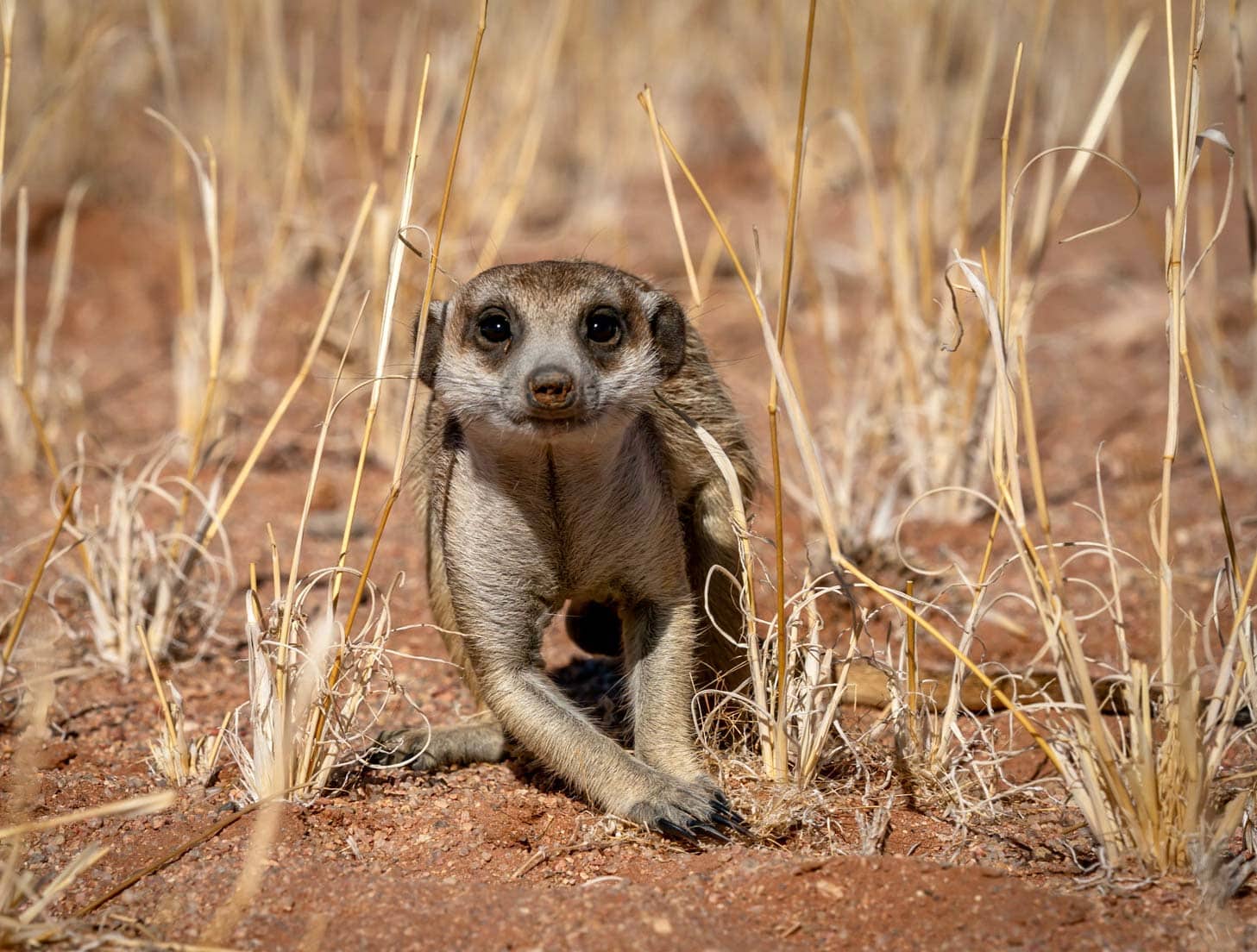
6. Leopard in Klaserie: A Heart-Stopping Encounter
Klaserie Private Nature Reserve, sharing unfenced borders with Kruger National Park, offers an authentic safari experience. Our time in this tranquil reserve was filled with intimate wildlife encounters.
One afternoon, the stillness of the Klaserie bush was broken by the agitated sounds of a buffalo herd across the river. Curious, I grabbed my binoculars to get a closer look at what might be disturbing them.
As I scanned the landscape, I heard a low growl. Through the binoculars, I was met with the piercing gaze of a female leopard just 30 meters away.
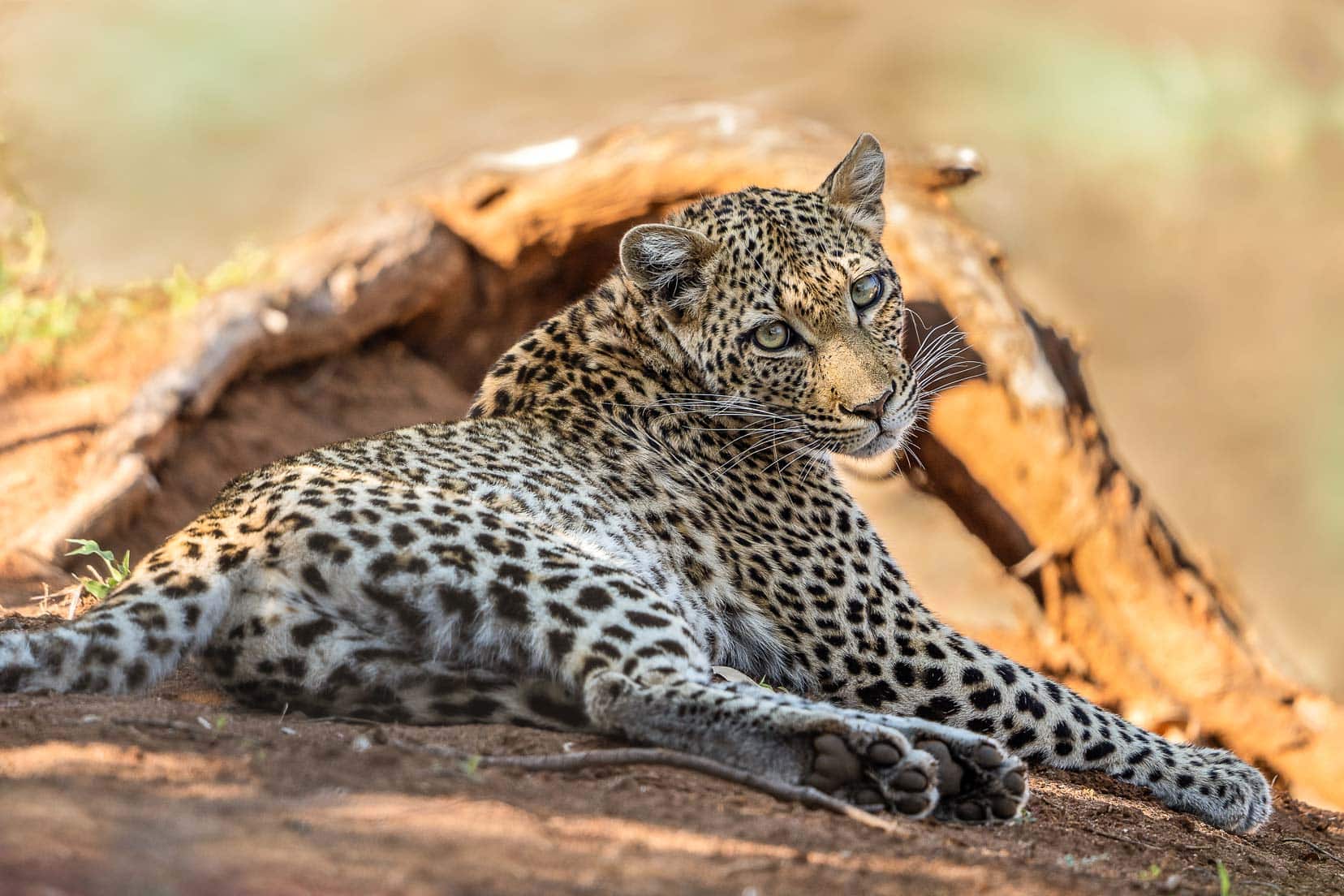
Her sharp, calculating eyes locked onto mine. My heart raced as conflicting instincts screamed inside me. Running was not an option. Slowly, I backed away, each step feeling like an eternity until I reached the safety of our rondavel.
She was obviously unimpressed with me. Which was a shame because I adored even the slightest glimpse of her. But there is a time in life when the collision of two worlds would prove disastrous. Now was that time.
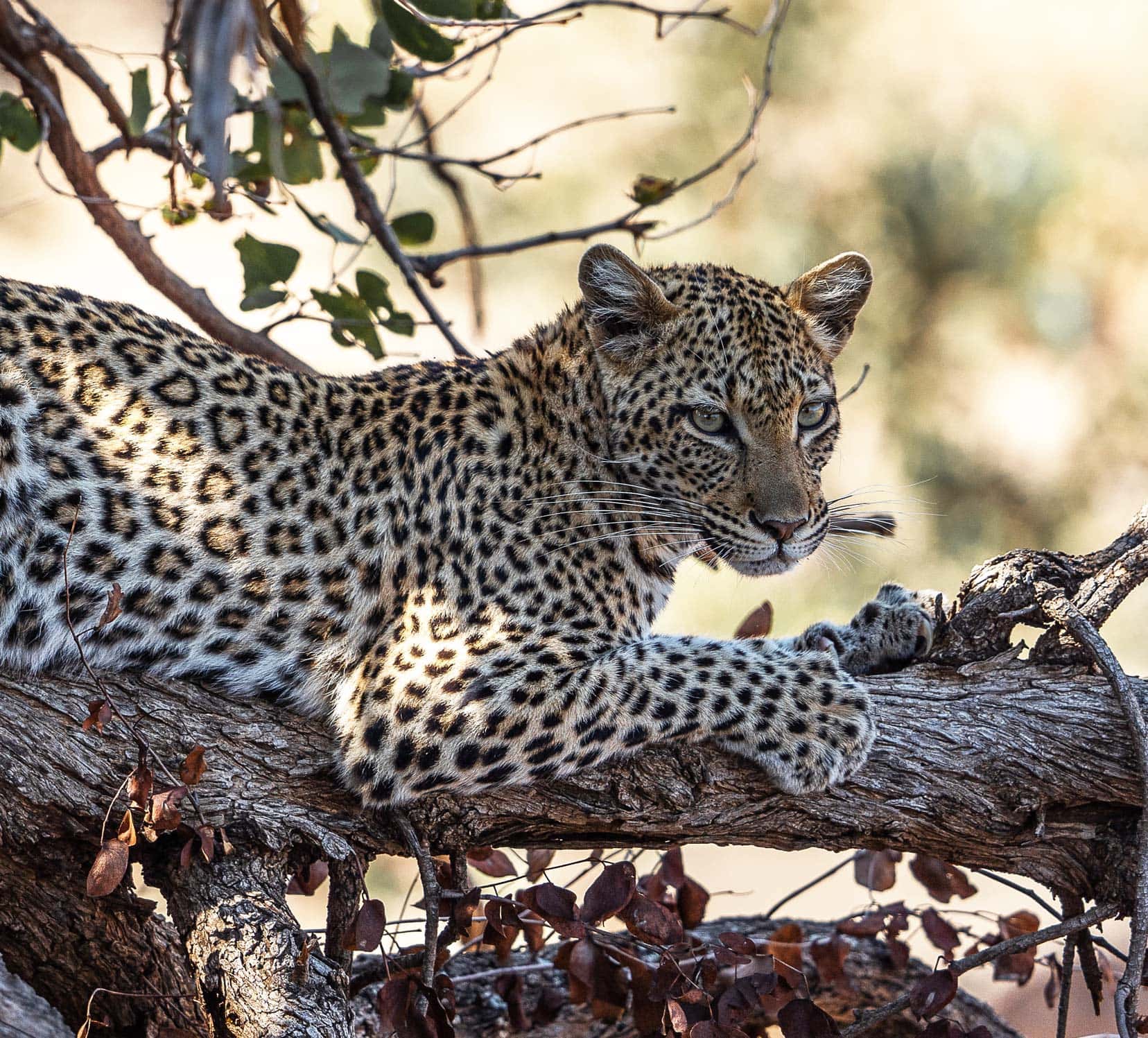
I never dreamt I would have such a close call with a leopard, and it served as a stark reminder to stay hyper-aware of your surroundings and never let your guard down when in the African wilderness.
The familiarity of camp had made me blase about the fact that I was surrounded by possible dangers. These moments in Klaserie reinforced our deep respect for the wild and the importance of coexisting with its inhabitants.
Luckily we have come across many other female leopards while in the safety of our car and enjoyed their presence without fear.
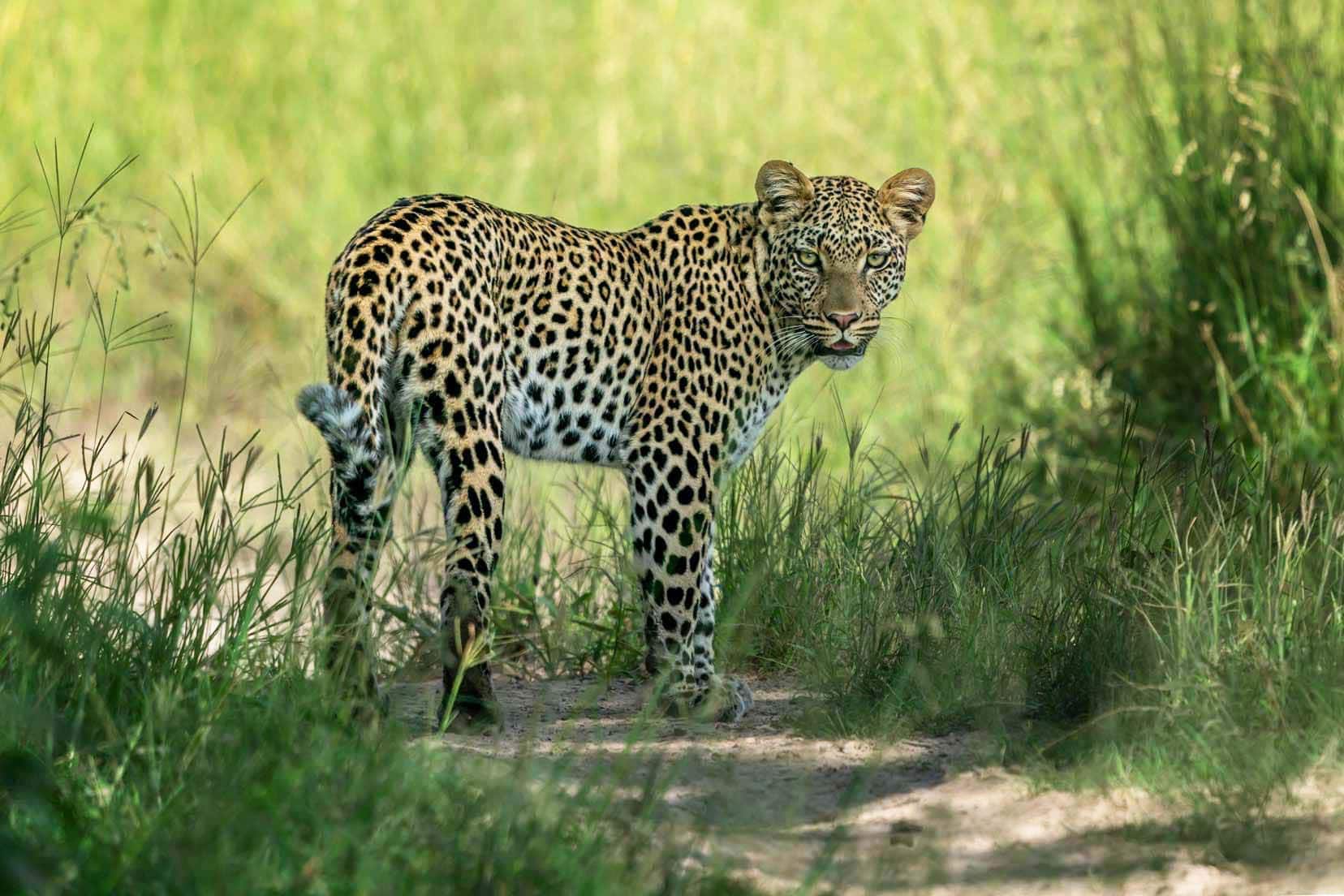
7. Rhinos at Khama Rhino Sanctuary: An Unforgettable Experience
Khama Rhino Sanctuary in Botswana offers unique, intimate encounters with rhinos in their natural habitat.
Managed by the local community, this sanctuary promotes conservation and eco-tourism. Our three-night stay was filled with incredible wildlife sightings and peaceful camping under the stars.
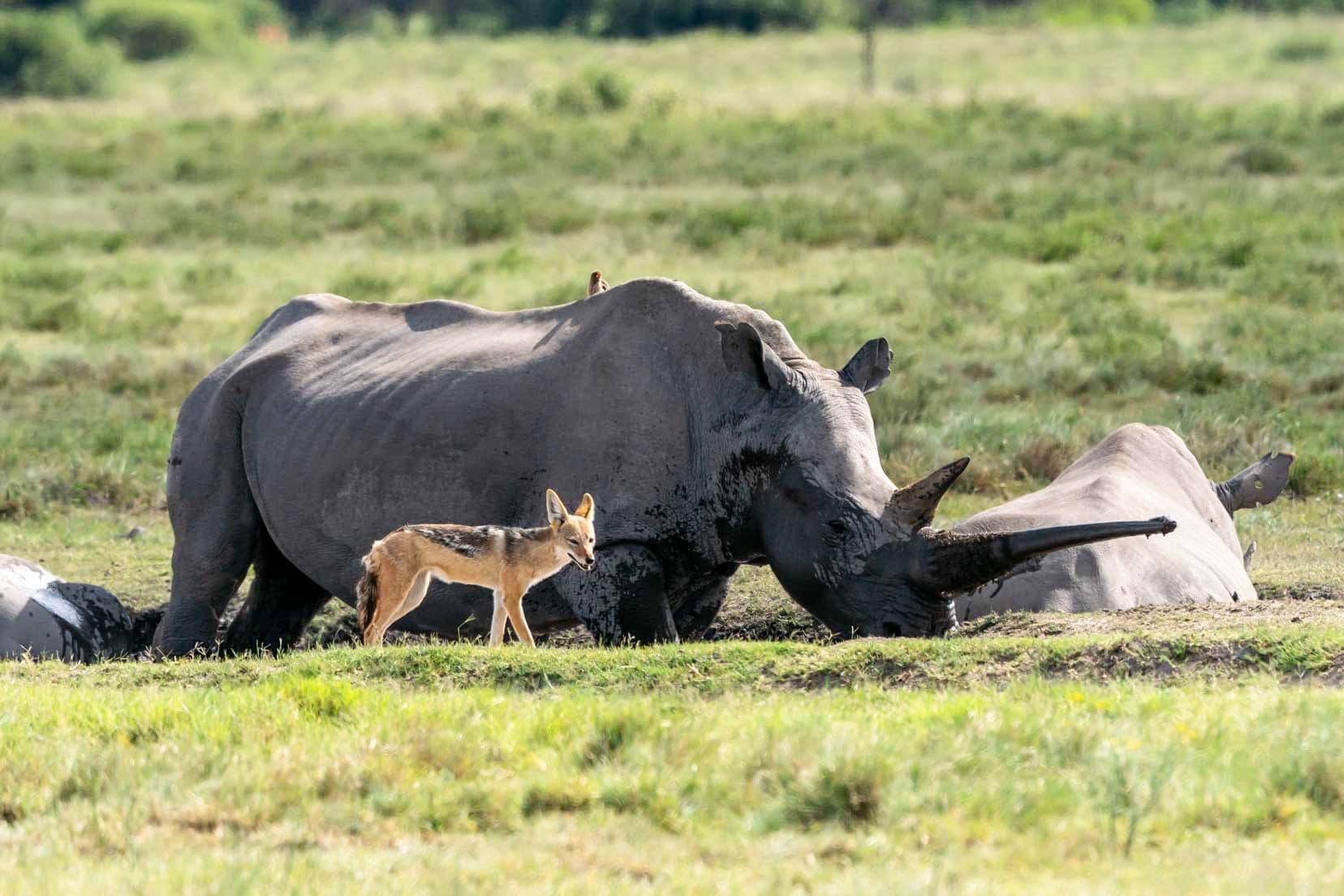
One early morning, still waking up, we began our drive along the sandy tracks. Turning a corner, we suddenly faced a massive rhinoceros. The rhino seemed equally surprised, having just been disturbed from its slumber.
We watched as it slowly moved into the bushes, giving us a memorable start to our day.
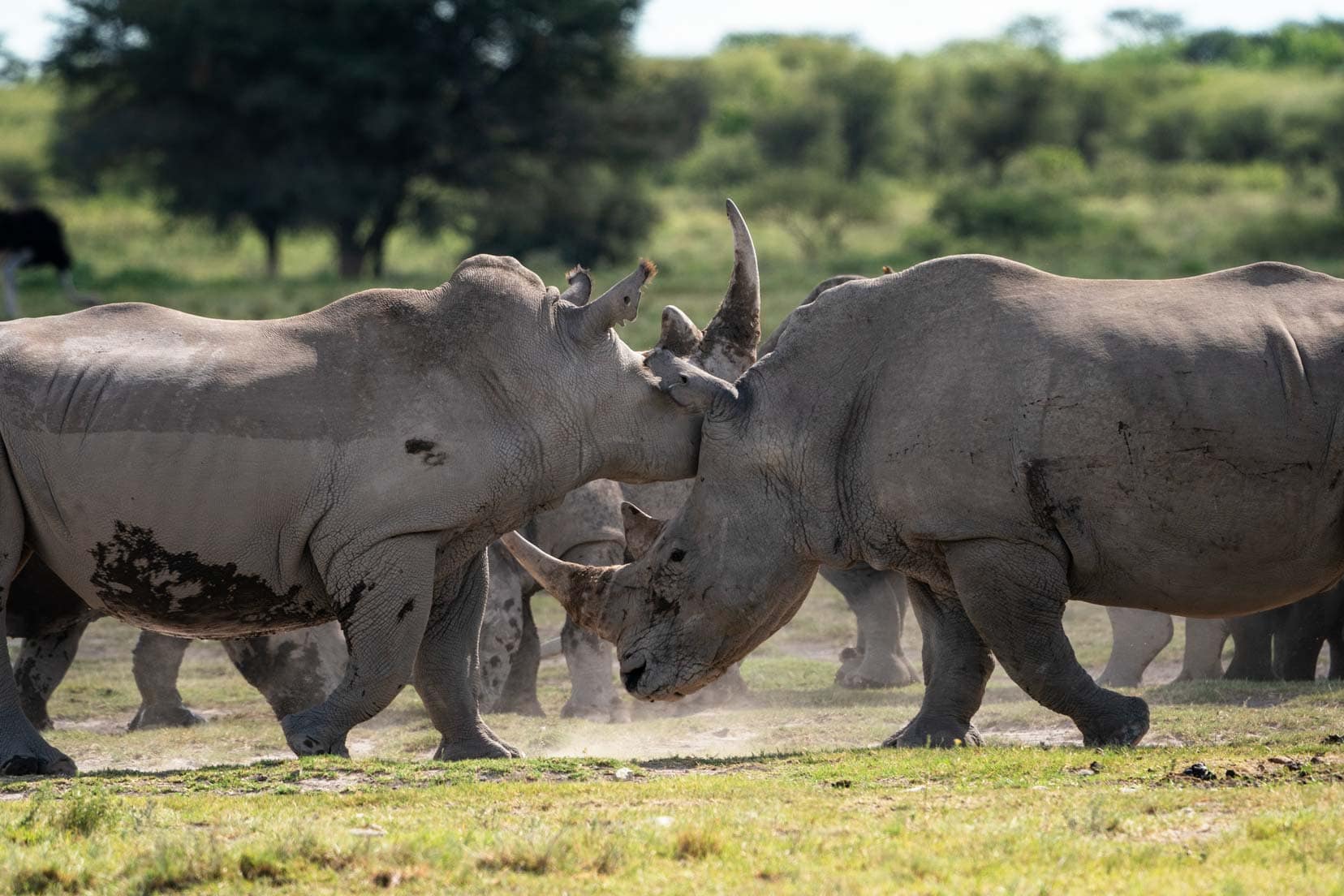
Later, on the same drive, we encountered the same rhino again, this time at its midden, performing its morning business. It was a unique and amusing experience, showcasing the daily life of these magnificent creatures up close.
Our time at Khama Rhino Sanctuary was more than just a wildlife viewing trip; it was a deep dive into the importance of conservation and ethical wildlife practices. Seeing rhinos with their horns intact was particularly impactful, reminding us of the sanctuary’s crucial role in protecting these animals from poaching.
In Klaserie Reserve we were used to seeing dehorned rhinos — an anti-poaching procedure carried out in an effort to protect these threatened animals.

8. Carmine Bee-Eaters in Savuti: A Spectacular Display
Savuti, in Botswana’s Chobe National Park, is renowned for its diverse wildlife and stunning landscapes.
Arriving during the summer rainy season, we set up at Paradise Camp, overlooking the dry Savuti Channel. Discover more of our stay at the Savuti Campsite here.
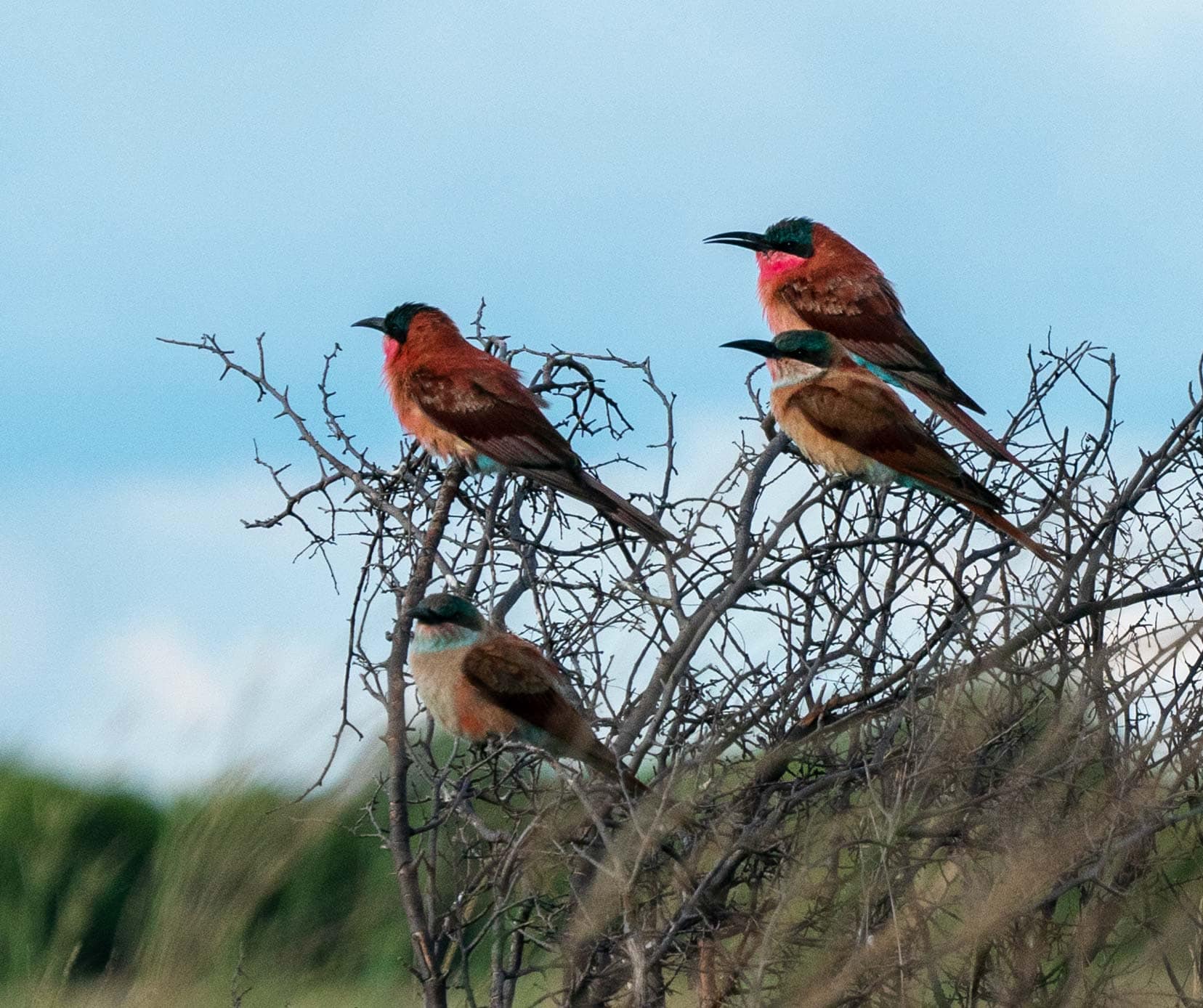
Our days were filled with game drives and quiet moments at the campsite. One afternoon, while exploring the tracks around Savuti Camp, we experienced something truly extraordinary.
As we drove past Motsibi Island, a southern carmine bee-eater appeared, gliding gracefully alongside our vehicle. Then another, and another—soon, we had a whole flock flying with us, their vibrant red and blue feathers creating a stunning spectacle against the green grass.

The bee-eaters escorted us for about 500 meters, flying at door level and darting around our vehicle. It felt like they were putting on a private show just for us.
Capturing their beauty on camera was a challenge, but Lars managed to snap some incredible shots while driving, and I recorded some video footage on my iPhone.
The sight of these colourful birds, with their effortless grace and striking hues, was a highlight of our entire trip. It was a surreal experience. Despite not being one of the Big Five or a big cat, this moment was mesmerizing and magical.

This encounter was special not only because of the bee-eaters’ beauty but also because it was unexpected. Savuti is famous for its plentiful lion sightings, but during our visit, we didn’t see any. Feeling a bit disappointed after a day of seeing only a few elephants, this magical bird experience happened on our way back to camp.
It reminded us that nature always has surprises in store and that sometimes, the most mesmerizing moments come from the least expected sources. The beauty and grace of the carmine bee-eaters created a memory that will stay with us forever.
9. Monkeys at Monkeyland: A Vibrant Encounter
Monkeyland Plettenberg Bay, just north of South Africa’s Garden Route, offers a unique experience for wildlife enthusiasts. Home to over 550 primates, this sanctuary is part of the South African Animal Sanctuary Alliance (SAASA) and is committed to ethical animal treatment and conservation.
Walking through Monkeyland, you’re immediately immersed in a world teeming with life. The sounds of various monkey species fill the air, creating an atmosphere of excitement and curiosity.
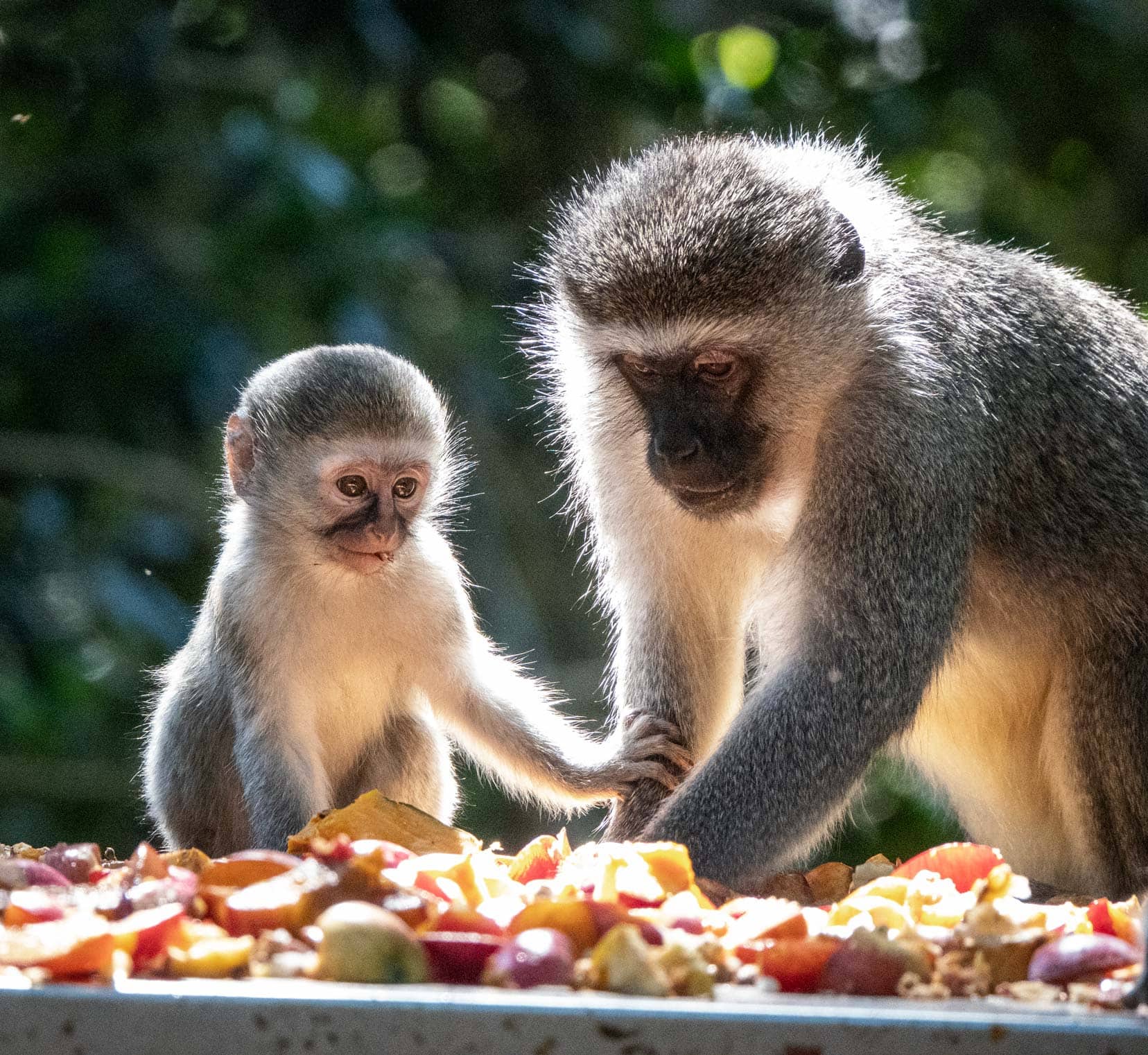
As we ventured deeper into the sanctuary, we encountered a playful troop of ring-tailed lemurs basking in the sun and several agile Lar Gibbons swinging through the trees. We managed to spot all ten species of monkeys living in this safe haven.
We loved the experience so much we went around on three tours!
Witnessing primates in such a vibrant, free-roaming environment underscored the success of Monkeyland’s efforts.

We later arranged a volunteer stint at a monkey sanctuary in South Africa and I was able to indulge more of my ‘monkey love’ by looking after vervet monkey babies. You can read more about that wonderful experience of volunteering with monkeys here.
10. A Close Encounter with Elephants at Nxai Pan
Nxai Pan National Park in Botswana is celebrated for its expansive plains, ancient baobab trees, and diverse wildlife. During our overland adventure, camping in this extraordinary park provided unforgettable wildlife experiences, especially our encounters with elephants.
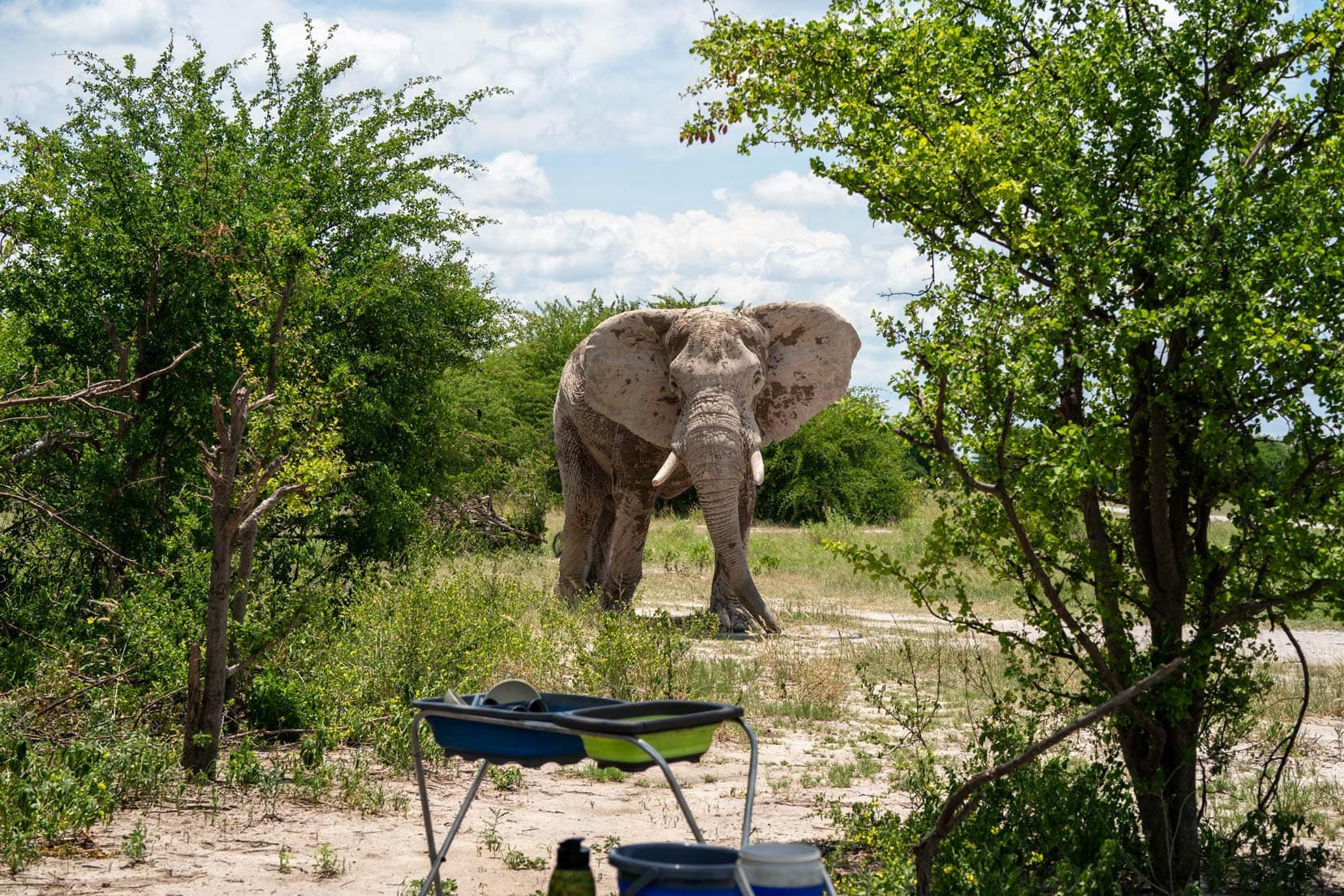
One sweltering afternoon, while having lunch at our campsite, we were startled by rustling sounds nearby. A massive elephant trunk and two broken tusks emerged from behind a bush.
This enormous elephant carefully navigated around the bushes and the edge of our campsite, continuing on its way without disturbing us.
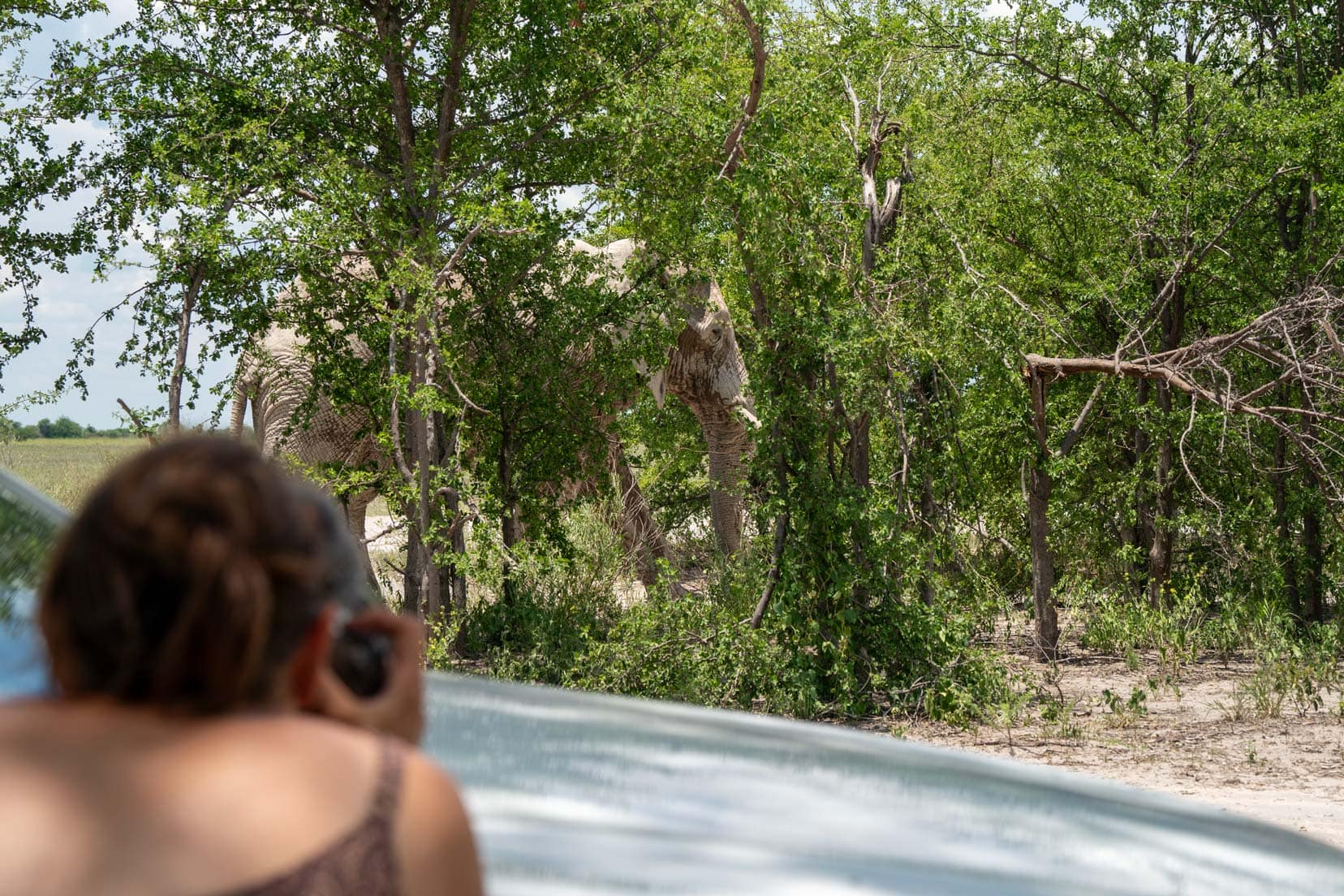
Over the next hour, we observed several elephants taking the same route, staying on the periphery of our camp. We grew more relaxed with each sighting, assuming all elephants would follow the same path. I began filming the approaching elephants, confident they would maintain their distance.
However, one elephant had a different plan. Unlike the others, this determined elephant walked directly through our campsite, passing less than two meters from where we stood.
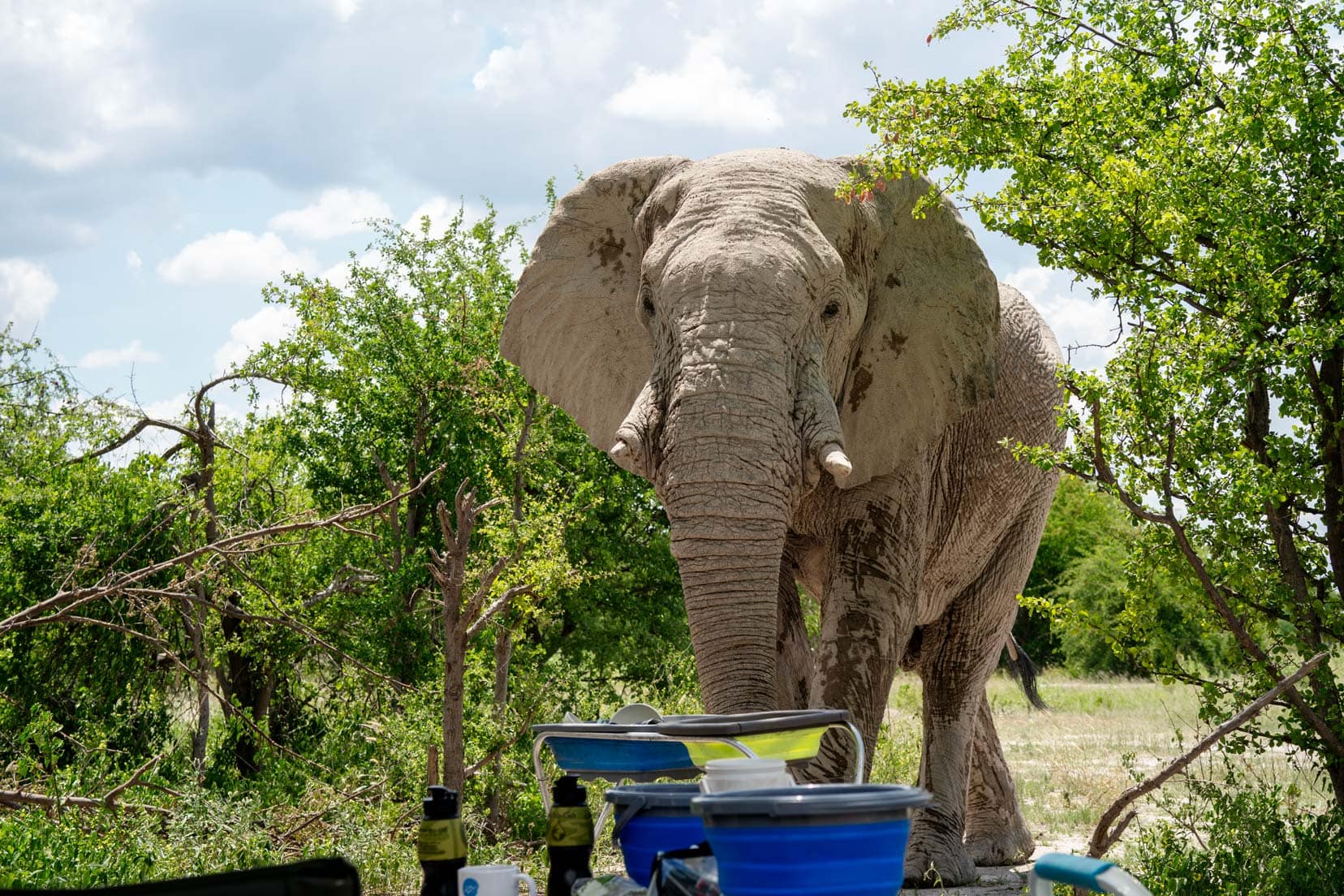
Instinctively, we quickly moved closer to our camper, feeling that access to the vehicle was the safest option. Fortunately, the elephant was uninterested in us, focused solely on finding water from a burst pipe nearby.
Our elephant encounter at Nxai Pan was exhilarating and a poignant reminder of the proximity of wildlife in such natural settings.
Witnessing hundreds of zebras during their annual migration added to the awe-inspiring experience, highlighting the park’s incredible biodiversity.
Read more about the camping experience and wildlife encounters at Nxai Pan, Botswana here.
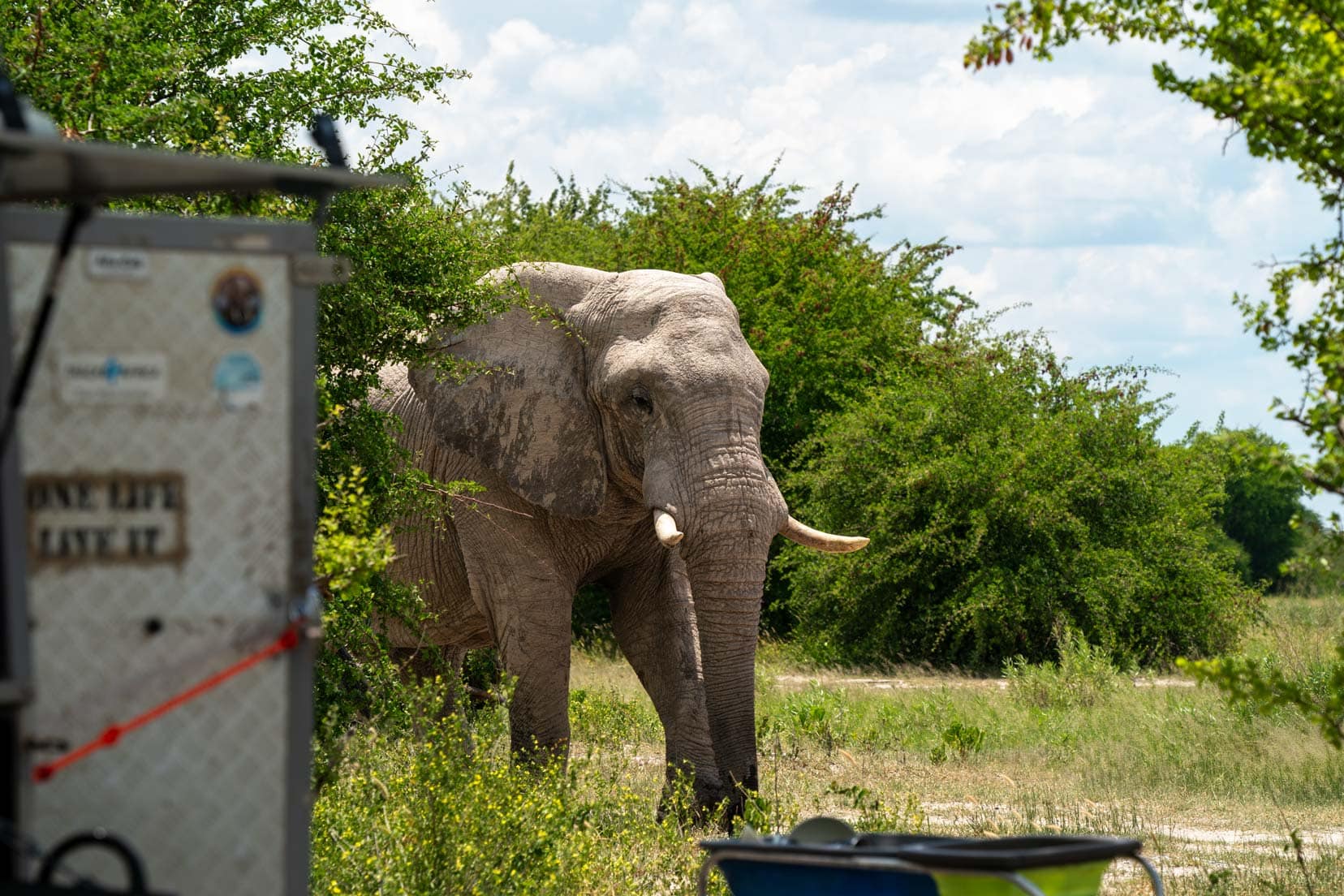
Map of our Top Wildlife Experiences
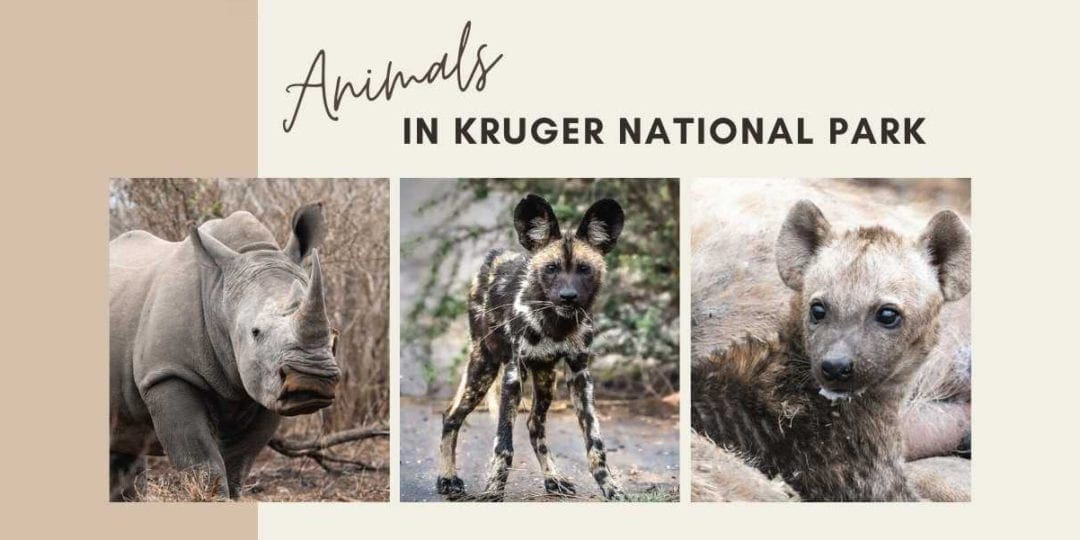
For a comprehensive look at the animals you might encounter on safari, check out our guide on Animals in Kruger National Park.
General Tips for Watching and Encountering Wildlife
These general tips, alongside our detailed encounters, aim to prepare you for your own wildlife adventures.
By following these guidelines, you can ensure a safe, respectful, and enriching experience with the incredible animals that inhabit our planet.
Respect Wildlife and Their Habitats
- Keep Your Distance: Use binoculars or a camera with a zoom lens to observe animals from afar.
- Stay Quiet and Calm: Avoid startling animals with loud noises or sudden movements.
- Do Not Feed Wildlife: Feeding animals can disrupt their natural behaviours and make them reliant on humans.
Safety First
- Follow Guidelines: Adhere to park rules and guidelines to keep both you and the animals safe.
- Stay in Your Vehicle: In safari settings, it’s often safest to remain in your vehicle.
- Be Aware of Your Surroundings: Stay vigilant to avoid unexpected encounters with wildlife.
Preparation is Key
- Right Gear: Bring appropriate gear, such as binoculars, cameras with zoom lenses, and wildlife guides. For more detailed gear recommendations, check out our safari accessories guide.
- Clothing: Wear neutral-coloured clothing to blend into the environment.
- Essentials: Pack water, snacks, and insect repellent. A first-aid kit is also advisable.
Optimal Viewing Times
- Early Mornings and Late Afternoons: These times are best for wildlife viewing as animals are more active.
- Seasonal Variations: Research the best times of year for specific wildlife sightings.
Photography Tips
- Camera Settings: Adjust your camera for various lighting conditions and fast-moving animals. For detailed photography tips, visit our safari photography tips page.
- Ethical Photography: Avoid using flash, as it can disturb animals. Explore our travel photography gear recommendations for the best equipment.
Sustainable Practices
- Leave No Trace: Carry out all your rubbish and leave natural habitats as you found them.
- Support Conservation: Choose eco-friendly tour operators and support local conservation efforts.
Driving and Navigation
- Tyre Pressure: Lower your tyre pressure to around 1.7 bar for driving on soft sand.
- Navigation Tools: Use the Tracks4Africa app for real-time route planning.
- Drive Slowly: Maintain a slow driving pace to avoid startling animals.
Supplies and Self-Sufficiency
- Water and Food: Stock up on supplies to stay off-grid as long as possible.
Our Favourite Wildlife Experiences in Africa … That’s a Wrap
Reflecting on these incredible wildlife encounters, we feel immensely grateful for the experiences that have enriched our travels.
Each encounter has taught us something new about the natural world and ourselves. We carry with us the values of patience, being present in the moment, and respecting wildlife.
We encourage you to seek out these moments, cherish the memories they create, and support conservation efforts to protect these magnificent creatures for future generations.
Whether you’re planning your own wildlife adventure or simply enjoying our stories, we hope to inspire a deeper appreciation for the beauty and wonder of wildlife.
If you’re inspired by our wildlife adventures and want to plan your own, sign up for our free travel planner. It’s packed with tips and resources to help you make the most of your journeys.
Or, explore more of our African adventures on our Africa Travels page. There, you can find detailed guides, personal stories, and practical advice to help you create unforgettable memories on this incredible continent.
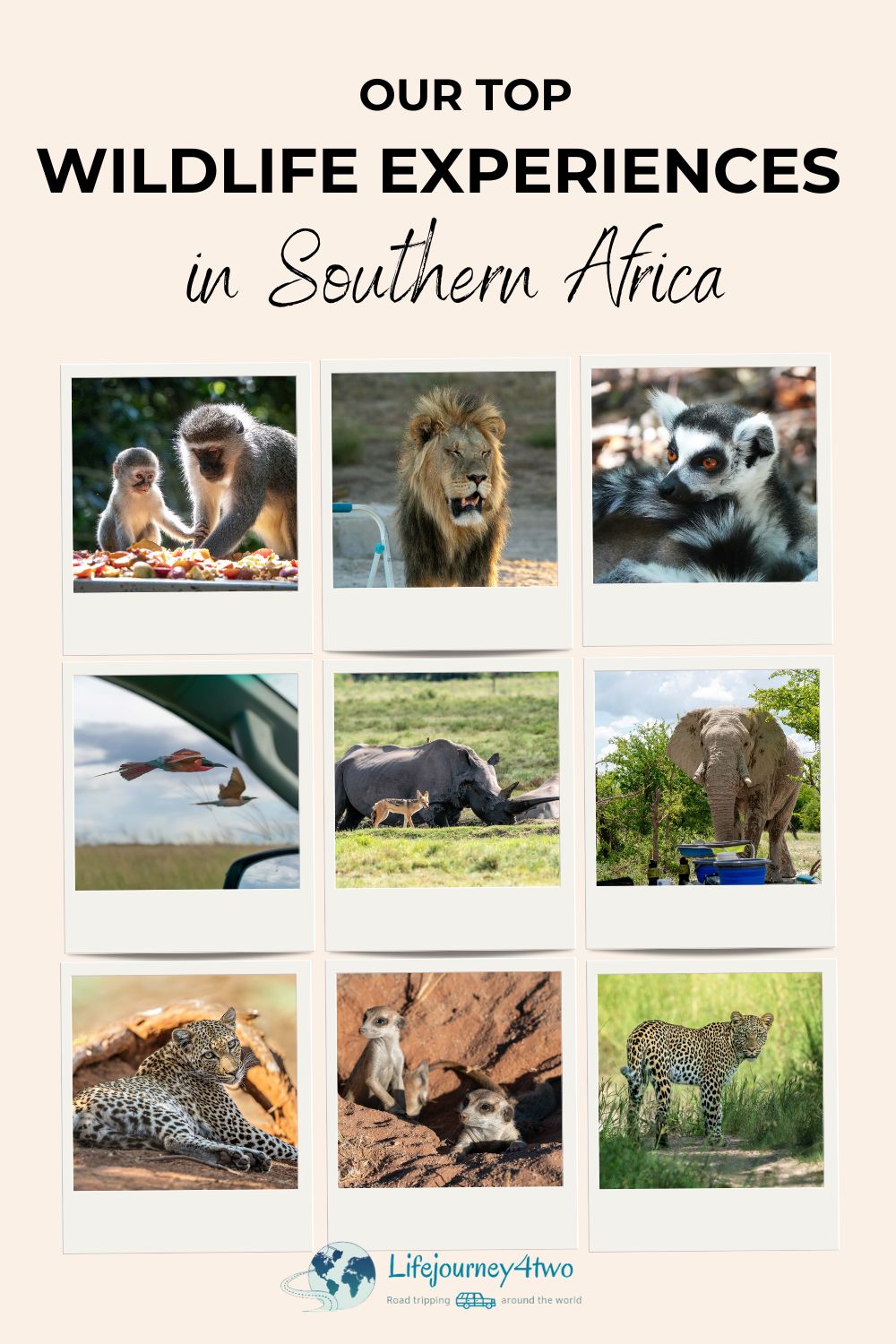
Planning Your Travels?
These are the travel resources we recommend and use when planning our trips.
- 🚘 Car Hire: We use DiscoverCars.com
- Motorhome/Campervan Rental: We highly recommend the Motorhome Republic
- 🪪 Order your International Driver’s Licence online here
- ✈️ Flights: Find flights on Skyscanner
- 🛏 Book Accommodation: We use Booking.com to find accommodation that suits our budget
- 🐶 Pet Sitting/Pet Sitters: Check Out TrustedHousesitters here (Use our Discount code: LIFEJOURNEY25 for 25% off. )
- Activities and Experiences: Get Your Guide and Viator
- Travel Insurance: Safetywing or World Nomads
- 🥾 Travel Gear and Accessories: Check out our top picks here — Lifejourney4two page on Amazon
For a more thorough list, visit our Travel Resources page here.

